Have you ever looked at your dog when it’s doing something and thought, “What’s going on?” You’re not alone. As much as we love our four-legged friends and care for them as furry family members, there’s no getting away from the fact that they’re a completely different species with their own dog behaviors.
While every dog has its own unique personality and characteristics, some dog habits apply across the board. Here are some of the most common dog behaviors and what they usually mean.
Howling
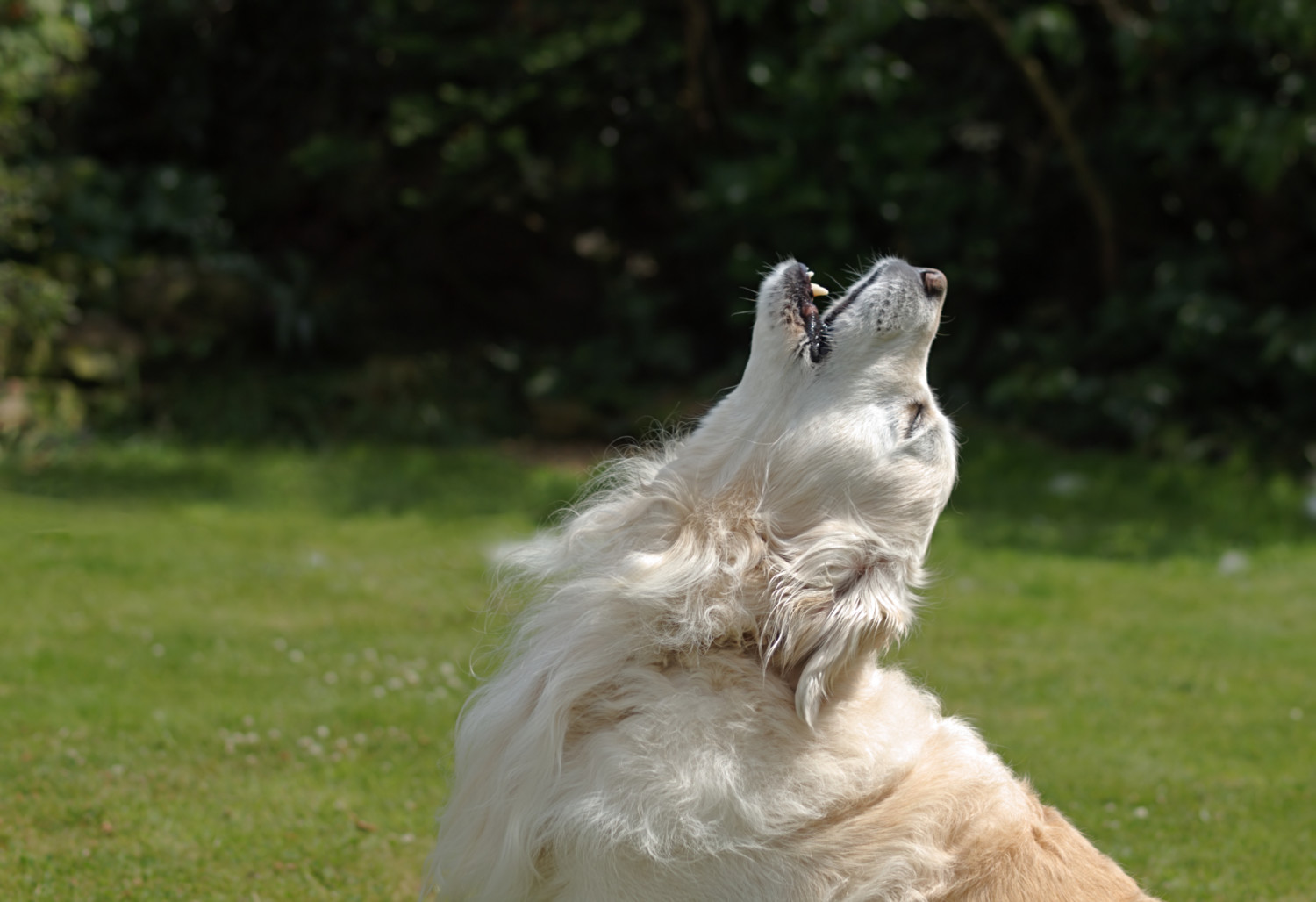
A dog that howls a lot can be an earache — literally. But remember that dogs can’t talk, so they have to use other ways to alert you to danger.
“Most dogs are wired to sense danger,” says Claudine Sievert, D.V.M., a cat and dog veterinary doctor from Kansas and veterinary consultant at CatPet. So when your dog howls, it could mean that your pet has sensed danger or is uncomfortable with the presence of a stranger. But howling may also be a dog’s way of communicating with its people (when it’s left alone, for instance), and some breeds are more prone to howling than others. According to the American Kennel Club, Siberian Huskies howl regularly, using their howl to “talk” and express a whole range of emotions.
There’s some overlap between howling and barking; some dogs bark when they sense danger, or are wary of a stranger. Other common reasons for barking are excitement, attention-seeking, boredom, fear, and pain, says PetMD. Like howling, the key to understanding this behavior is to look at their body language, then identify the stimulus causing the bark.
Looking At You Before Doing Something
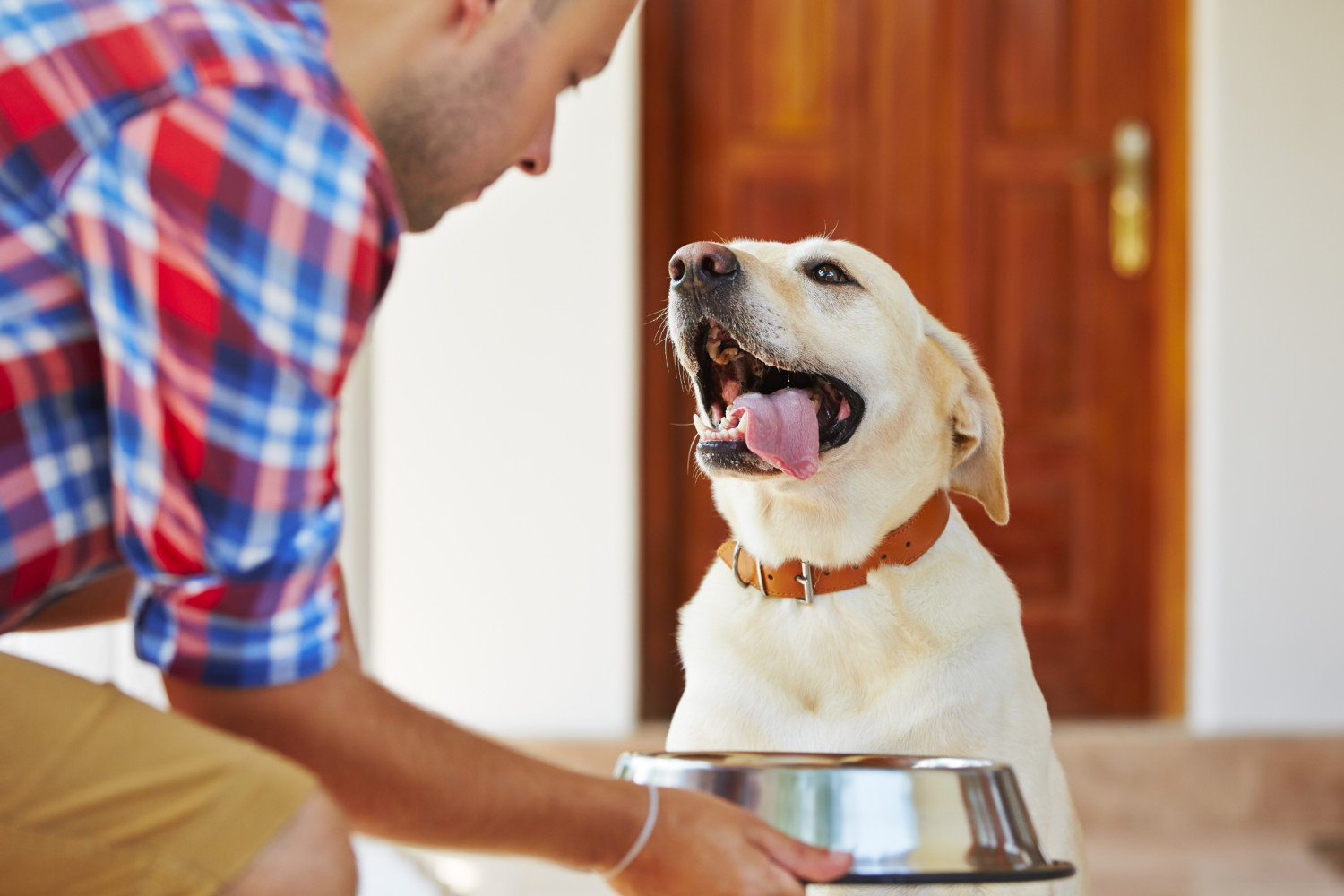
Some owners may think that if their dog looks at them before doing something it is a sign of guilt or defiance, but this isn’t true, says dog trainer Steffi Trott.
“Dogs don’t show defiance or guilt in the way humans often interpret it,” Trott explains. “As social animals, dogs enjoy eye contact with humans and often seek it out. Your dog may check in with you for reassurance, to make sure that you are still there or simply because he loves you and enjoys looking at you.” So lap up those looks!
Humping
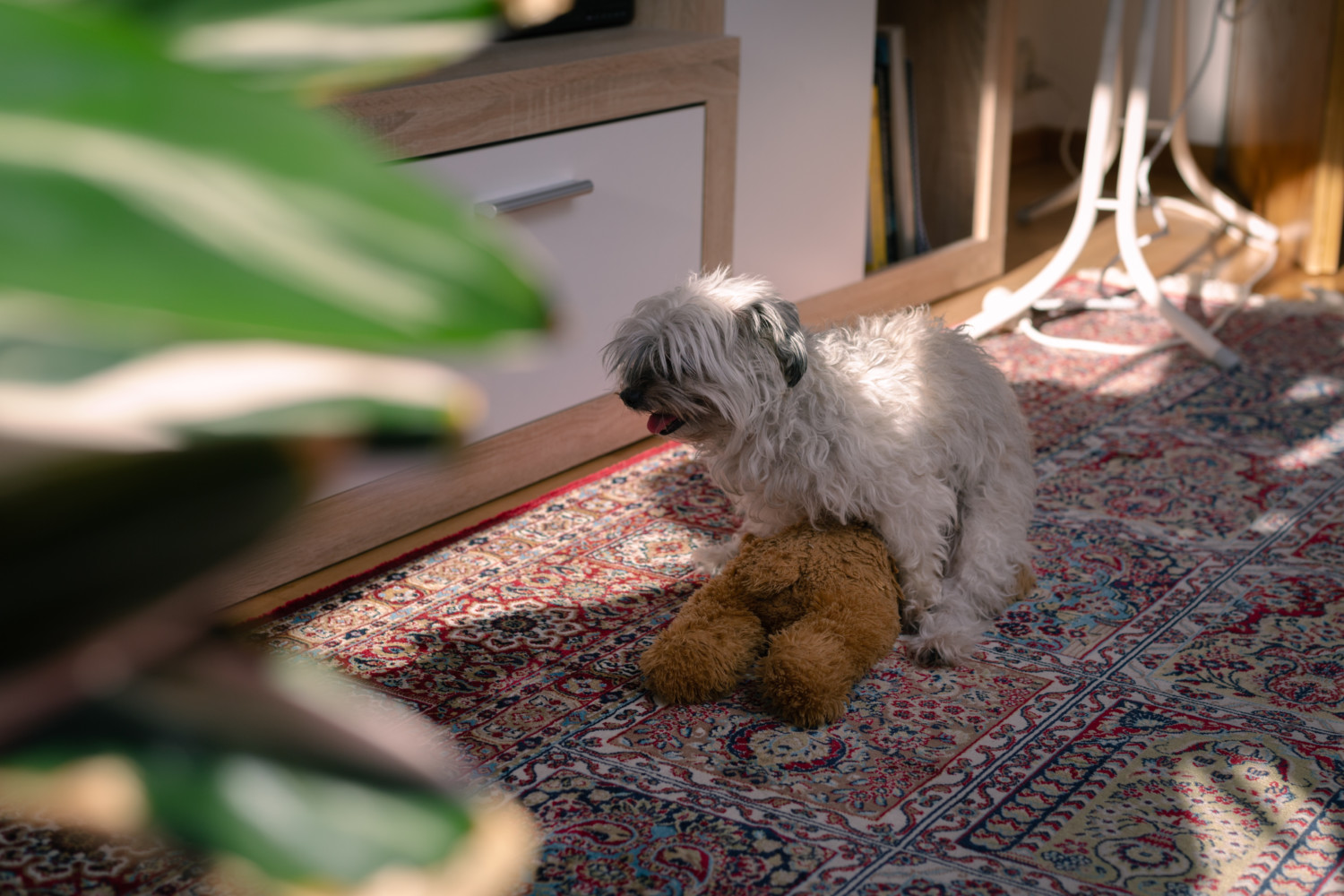
The obvious explanation for a dog who humps everything in sight is that it’s sexually excited, and this is certainly often the case, says The Puppy Academy team. But what you may not know is that humping can also be a sign that your dog is wanting to take control of a situation. Oh, and when it comes to humping targets, anything soft and pliant goes — from stuffed animals to blankets.
Sitting On Your Feet
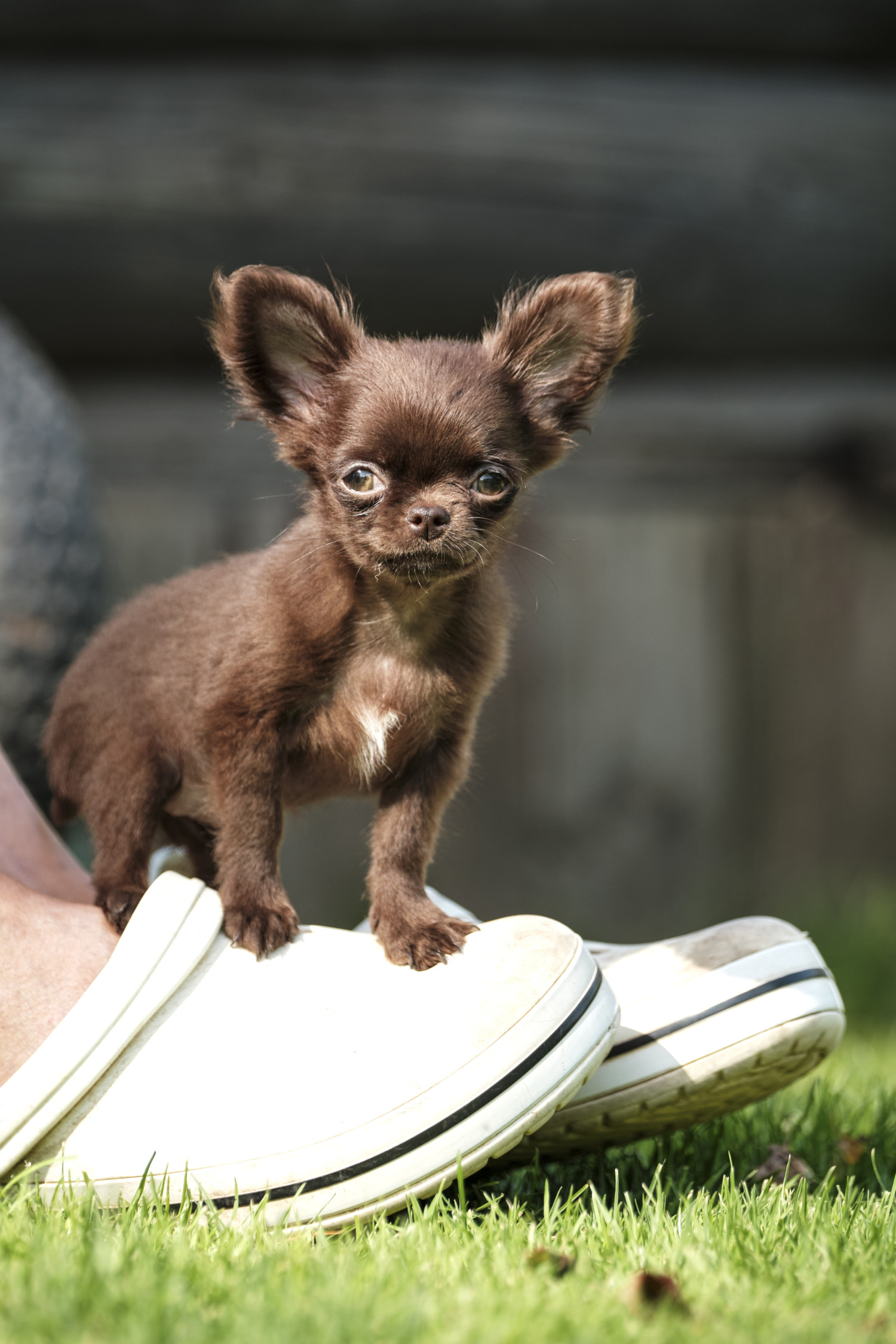
Getting comfortable on your feet is typically a sign that your pup is wanting some love, says The Puppy Academy team. But it could also mean it’s trying to own your space. If you have guests over, or there’s another animal in the house, it might be doing this to “claim ownership” of you (and your feet).
Clinginess
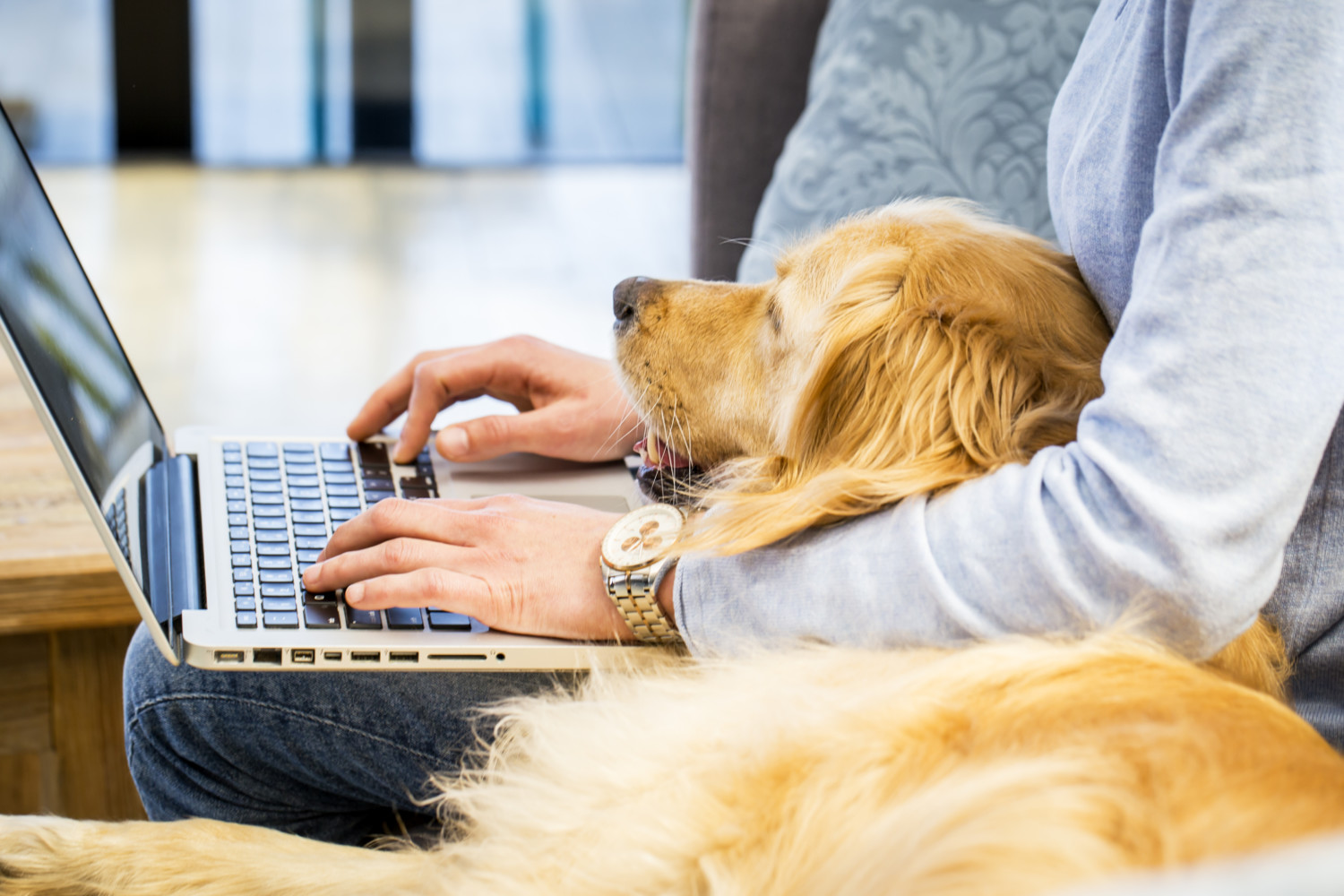
Pups are natural bonders, so it’s perfectly normal if your dog follows you around the house. It just wants to be close to you. But when a dog is really clingy (like won’t-leave-you-alone-for-a-second-clingy), it’s a good idea to train it to survive on its own, says Sievert. Try leaving it on its own in a safe space for a short time, and gradually increase this period over a number of days. As soon as it realizes you always come back, it will be happier with some alone time now and again.
Heavy Panting
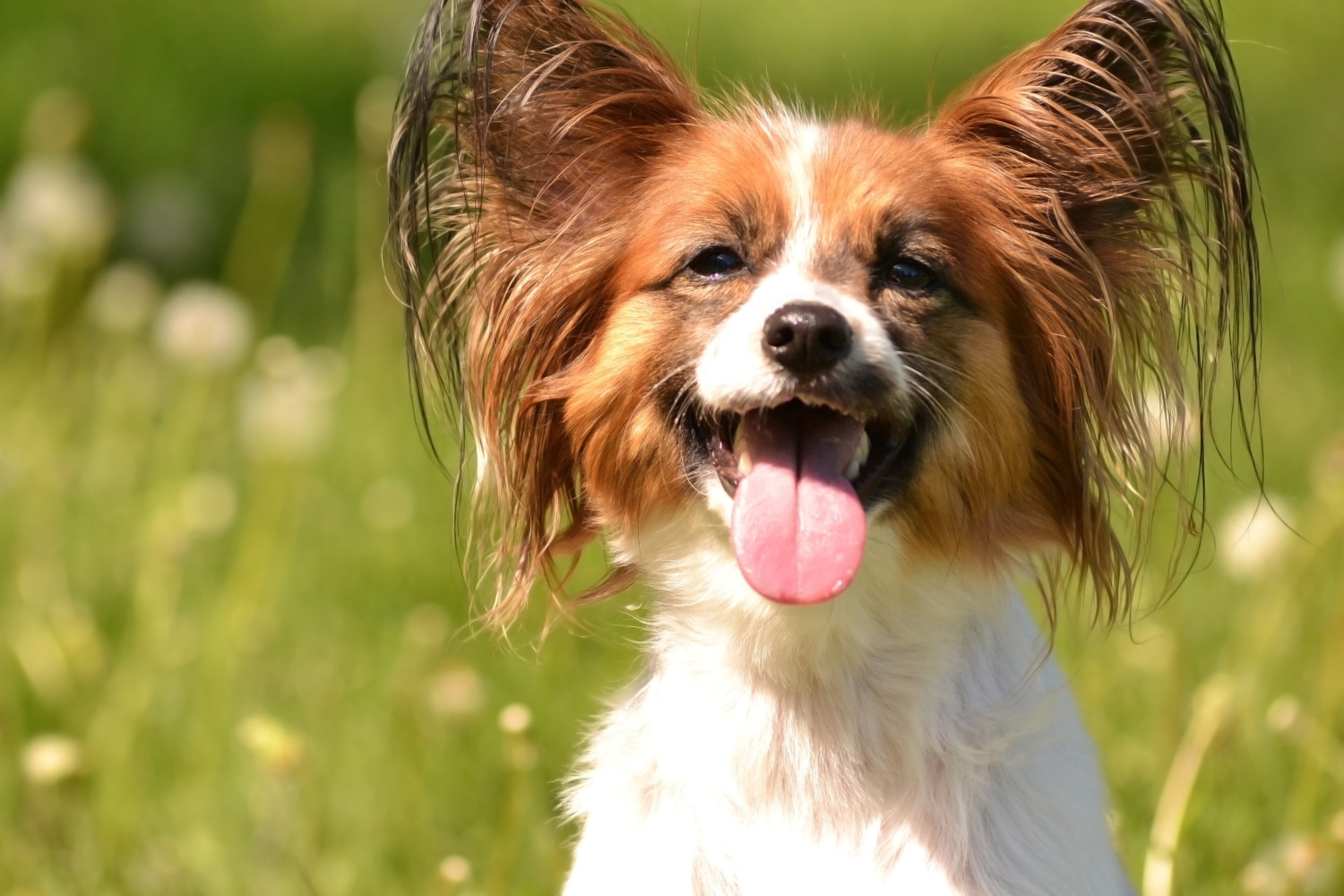
Dogs can’t cool themselves down by sweating (like humans do), so panting is normal behavior for active, happy dogs. Generally, there’s no cause for concern, says Sievert. But extremely heavy panting on a hot day can also be a sign of heat stroke. Other warning signs include restlessness, laying out flat, and not responding to you because they’re so focused on cooling themselves down. If you think your dog has heat stroke, get it seen by your veterinarian straight away.
Running In Circles
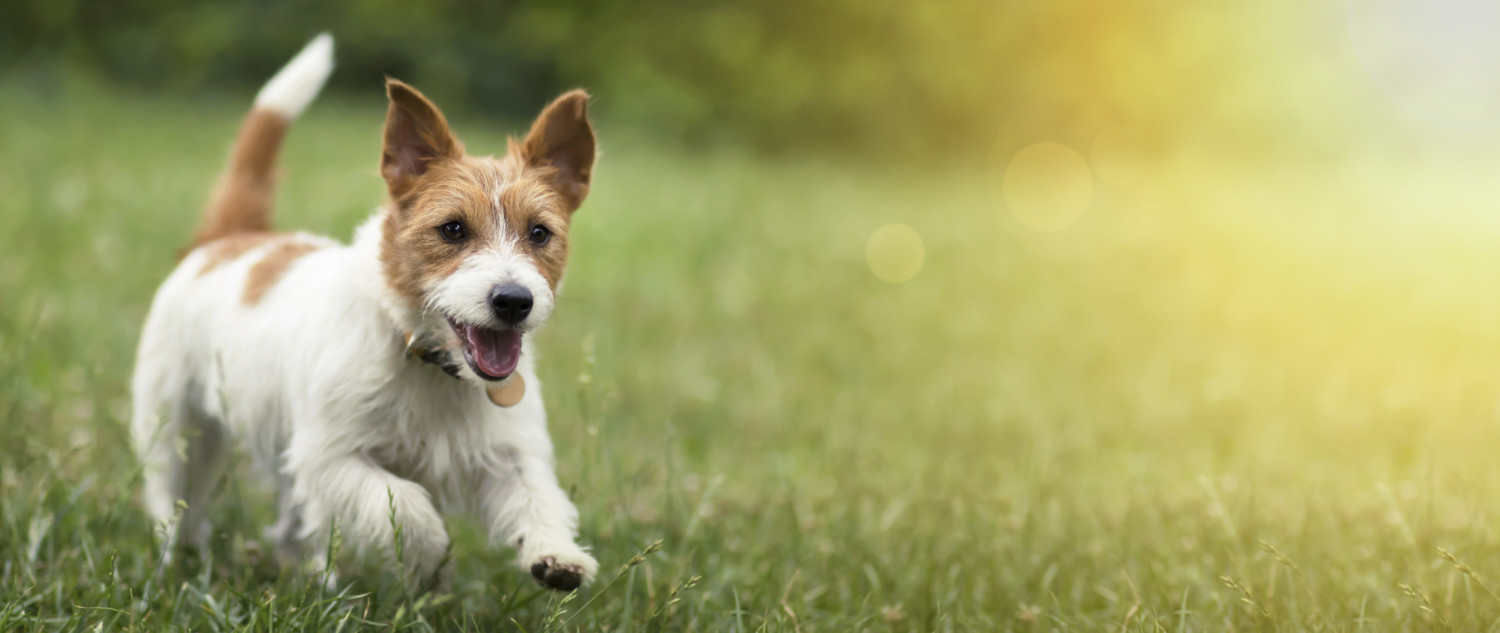
Dogs love to play and running in circles (also known as “zoomies”) is often a favorite game, says Sievert. In fact, you can join in (ball optional) for a fun bonding experience between you and your pooch. The American Kennel Club says zoomies is a natural dog behavior experienced by dogs of all ages and breeds at times, which is frequently caused by an excess buildup of energy that dogs release in one big burst. Some dogs like to “zoom” at certain times of day, such as the first thing in the morning or in the late evening after being indoors for a long period.
However, if you notice your dog is running in circles more often than it should, there may be a health issue. In that case, visit your veterinarian as soon as possible, Sievert advises.
Wagging Tail
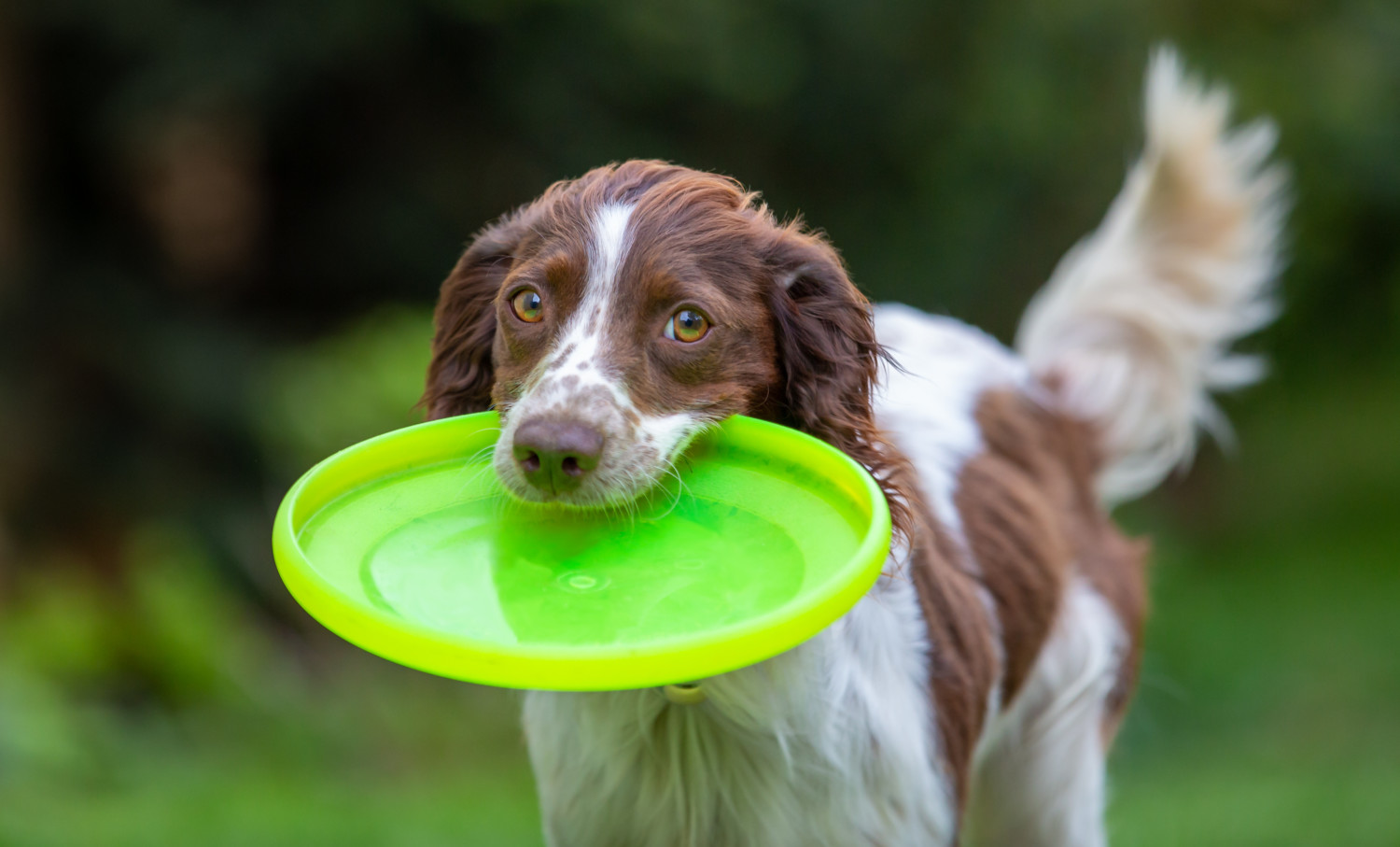
If there’s a sure sign of a happy dog, it’s a wagging tail: Generally, this one doesn’t really need much explanation. You probably notice your dog wagging its tail when you get home from work or school because it’s so excited to welcome you back.
“A wagging tail is a sign of enthusiasm and happiness,” Sievert says. “If your dog wags its tail often, you’re doing a good job!”
However, there are exceptions. VCA says a wagging tail may also indicate agitation, negotiation, aggression, submission or curiosity. And wagging speed is an important factor – the faster the wag, the more excited a dog is, while a slow, slight wag may indicate that a dog is insecure or wary about meeting a new person.
Turning In Circles Before Lying Down
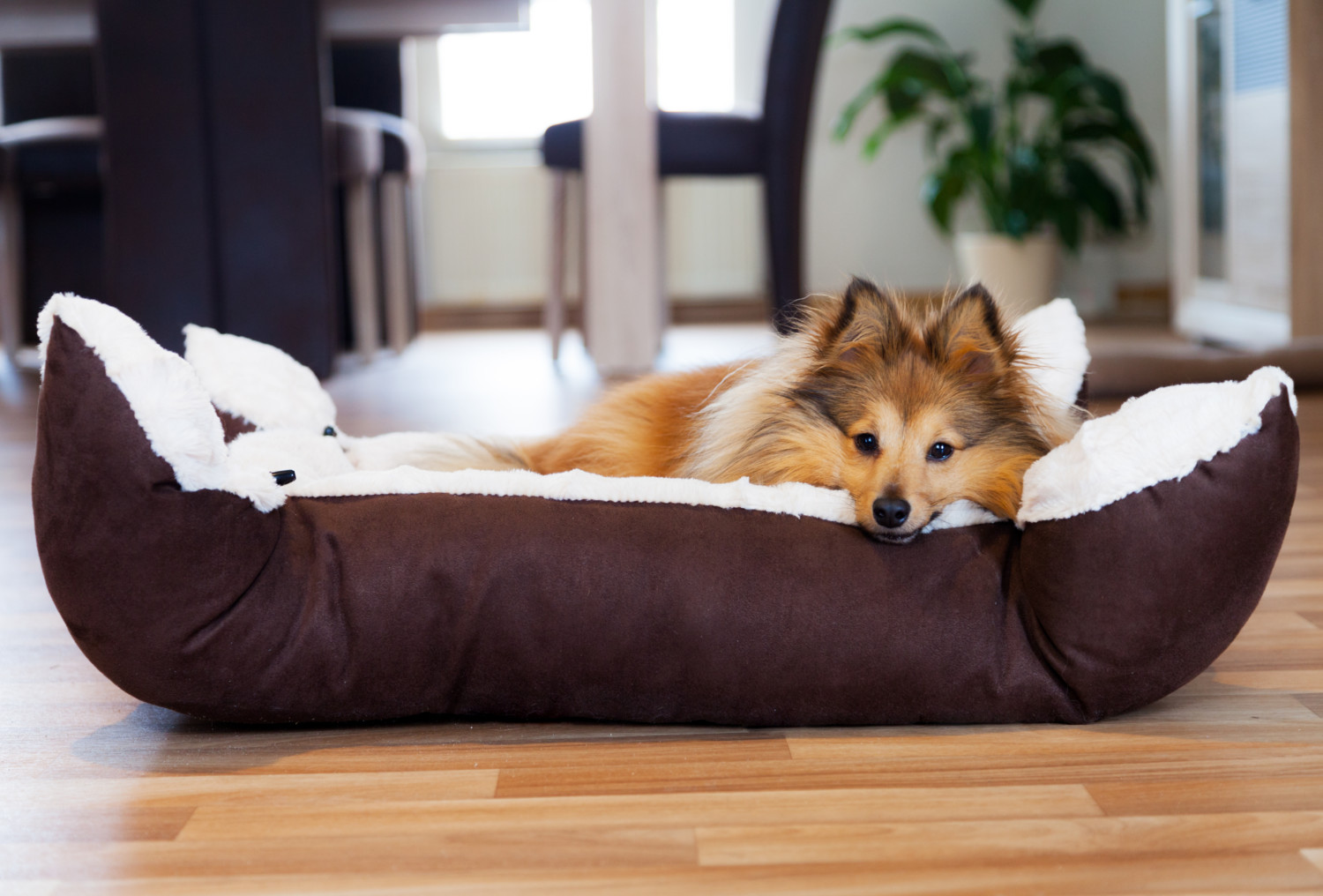
Turning in circles before lying down is a dog’s form of nesting, say The Puppy Academy team. You’ll probably notice your pup doing this in the evening, before going to bed.
“Pups like to make their spot comfy before settling in, just how we may fluff the pillows around us,” they explain. “It can help dogs feel more safe and secure, since they’re getting a sense of control over their bedtime routine by settling down in a position that feels most comfortable.”
According to VCA, turning in circles is an act of self-preservation that dogs have inherited from their wolf ancestors – your dog instinctively knows it needs to protect itself in a particular way to avoid an attack. It’s believed that wolves sleep with their noses to the wind to ensure they pick up the scent of potential danger, and circling helps them figure out the direction of the wind.
Submissive Urination
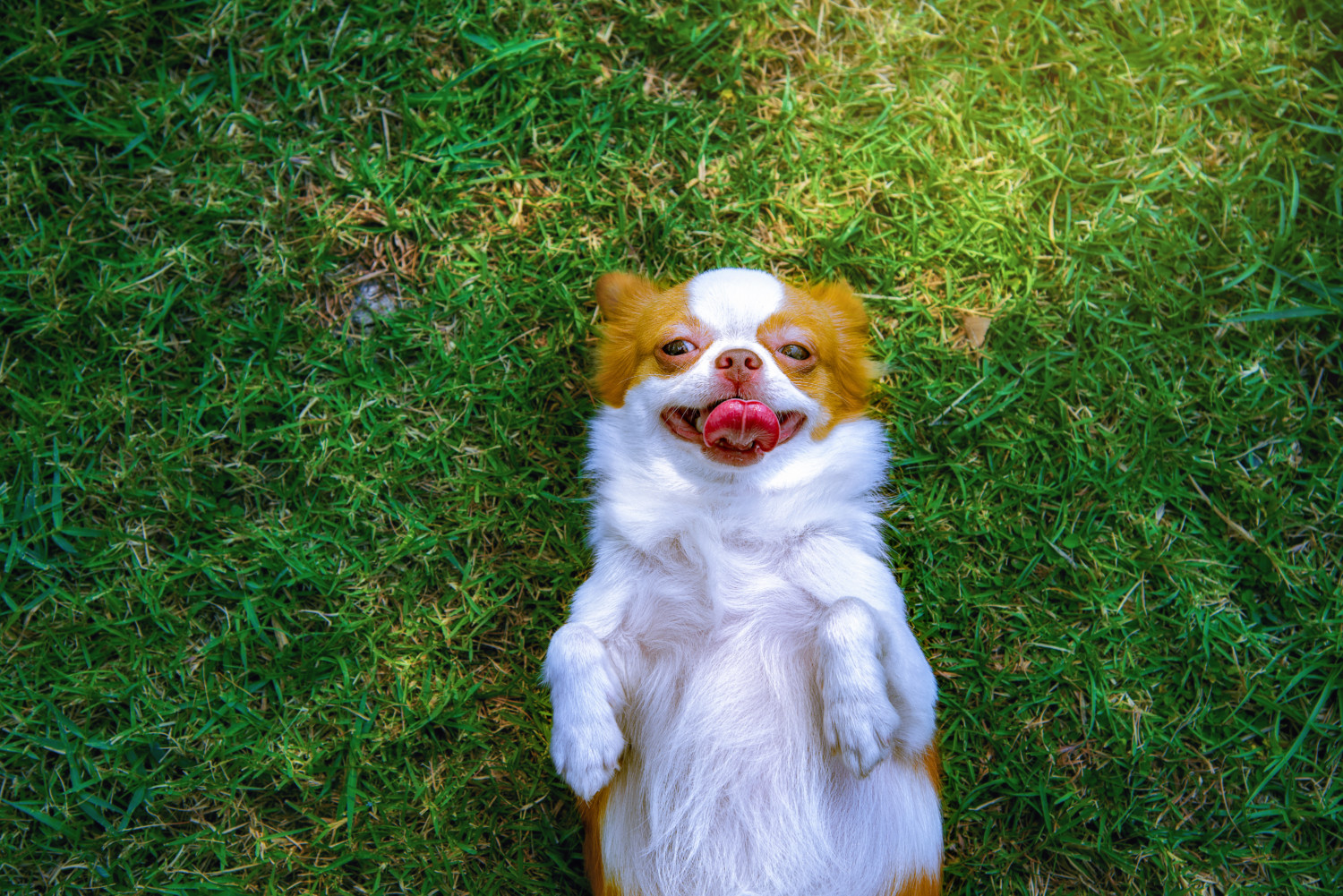
As a pack animal, a dog has different ways to show its leader it knows who is boss. One way is to lie on its back and urinate on itself, which is known as submissive urination.
According to The Humane Society of the United States, submissive urination is common and normal in puppies, and they usually outgrow the behavior. But the behavior may become an issue for pups who remain timid into adulthood. After checking with your veterinarian that there aren’t any medical issues, you can help your dog build up its confidence with positive reinforcement training methods and a consistent environment and routine. Gradually introduce new situations and people to make sure the dog has positive and happy experiences.
Digging
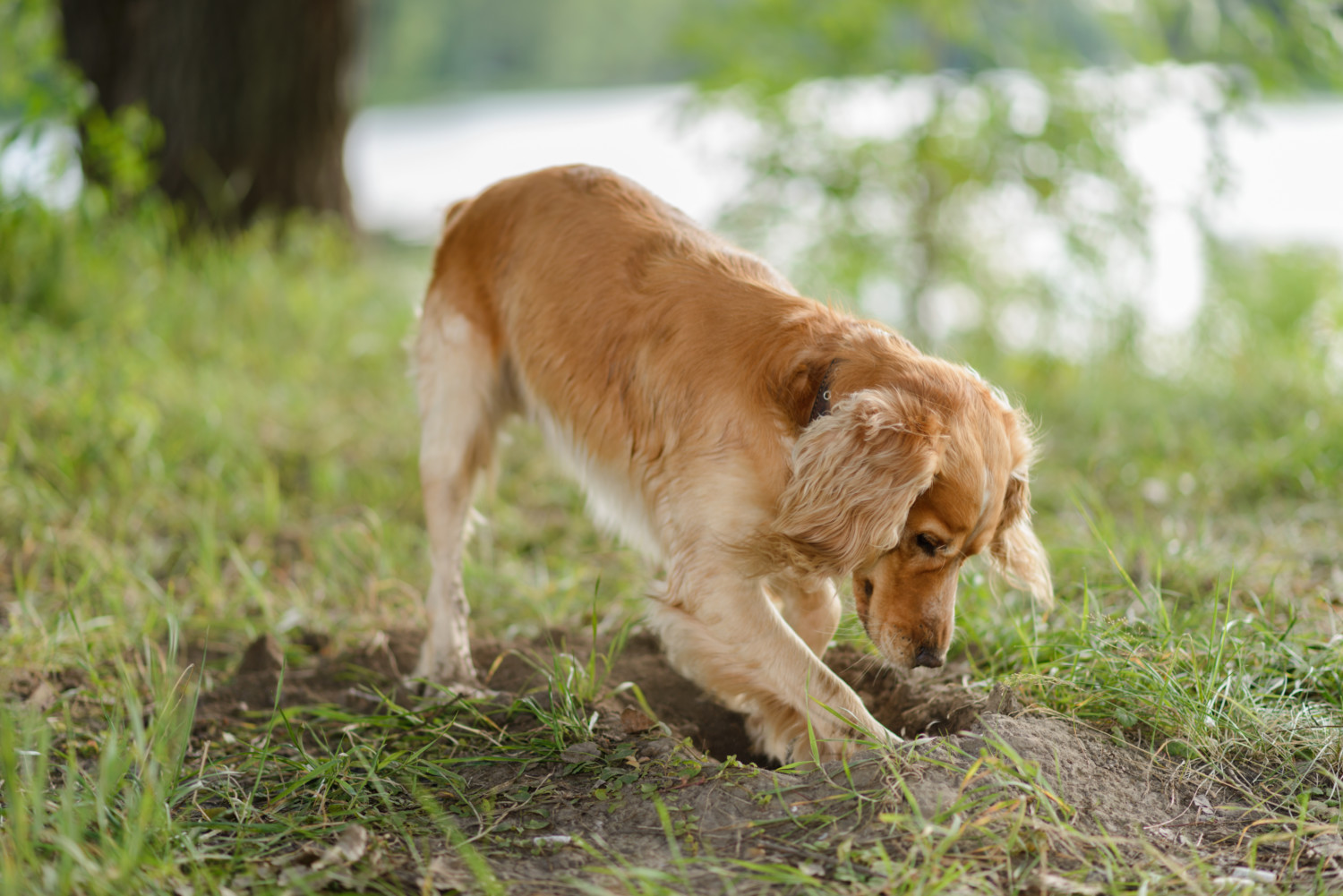
An instinctual behavior all dogs have is digging, and it’s something they do for a wide range of reasons. They might be doing it purely for fun if they don’t have other toys or playmates, or if they get bored when they’re left alone outdoors for long periods of time.
In hot weather, dogs may dig holes to lie in to cool down, says The Humane Society of the United States. If the digging is at the roots of trees or shrubs or focused on a single area (rather than the boundaries of the yard), they may be digging to try to catch burrowing animals or insects – this is their hunting instinct coming out.
Digging can also be a sign of boredom or excess energy, say The Puppy Academy team, but some dogs will still want to dig even after a long walk. If your dog’s digging isn’t too destructive, the best advice is to let them enjoy it. (And have the right cleaning products to hand to tidy up afterward.)
Butt Scooting
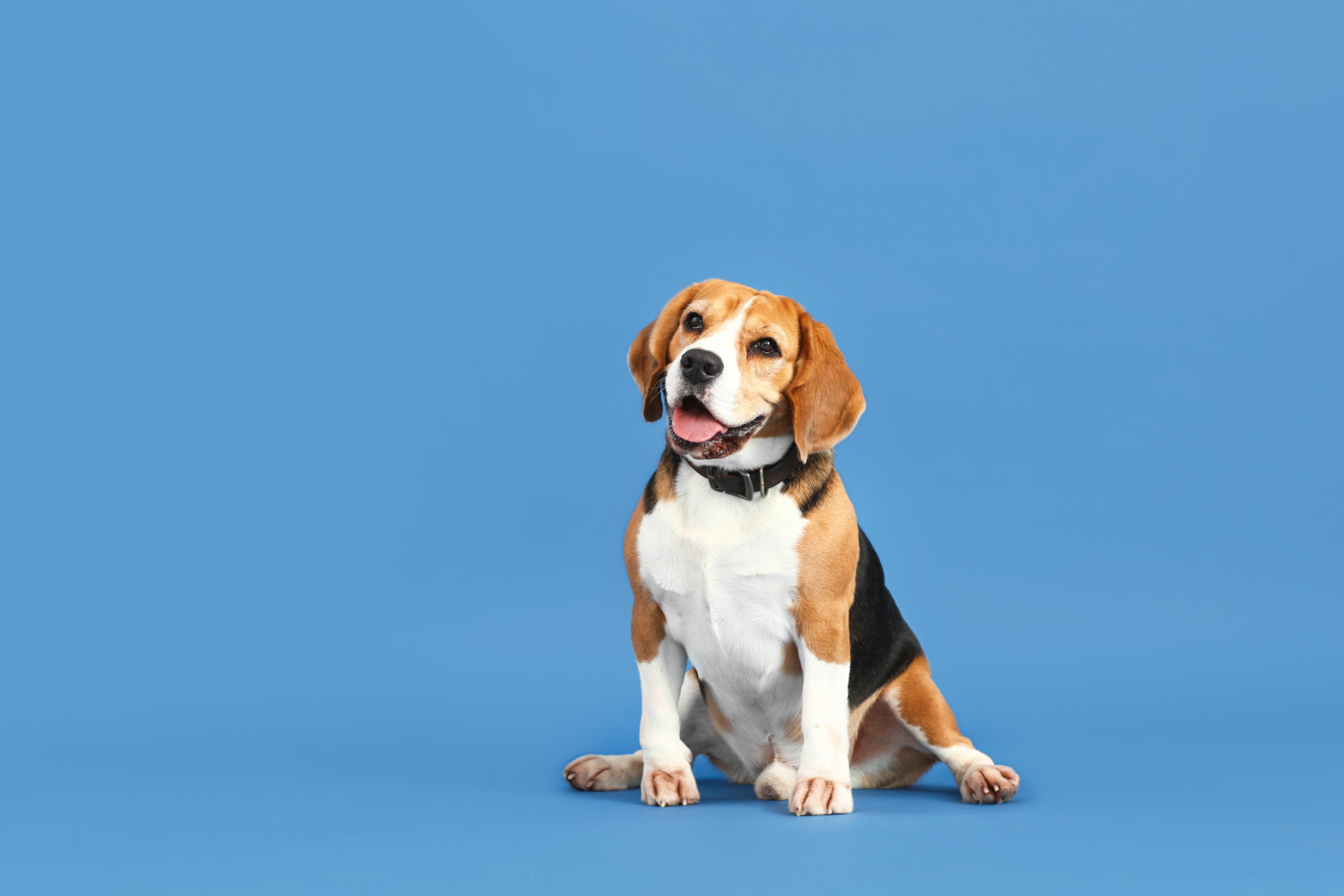
Butt scooting might look comical, but it may be a sign that your dog needs to get its anal glands expressed, says Marissa Sunny from Best Friends Animal Society, a sanctuary for homeless and special needs animals. If you’re not sure about doing this yourself, don’t worry; you can take your dog to a local groomer or vet clinic to get this taken care of. But don’t wait too long.
“If you see scooting, you need to get them expressed ASAP, as overfilled anal glands can lead to infections and even rupturing,” Sunny warns.
Other possible reasons for butt scooting are skin irritation from grooming, food allergies, intestinal parasites or trauma to the anal sacs, says American Kennel Club. To get to the bottom of it, take your dog to the veterinarian for a checkup.
Butt Sniffing
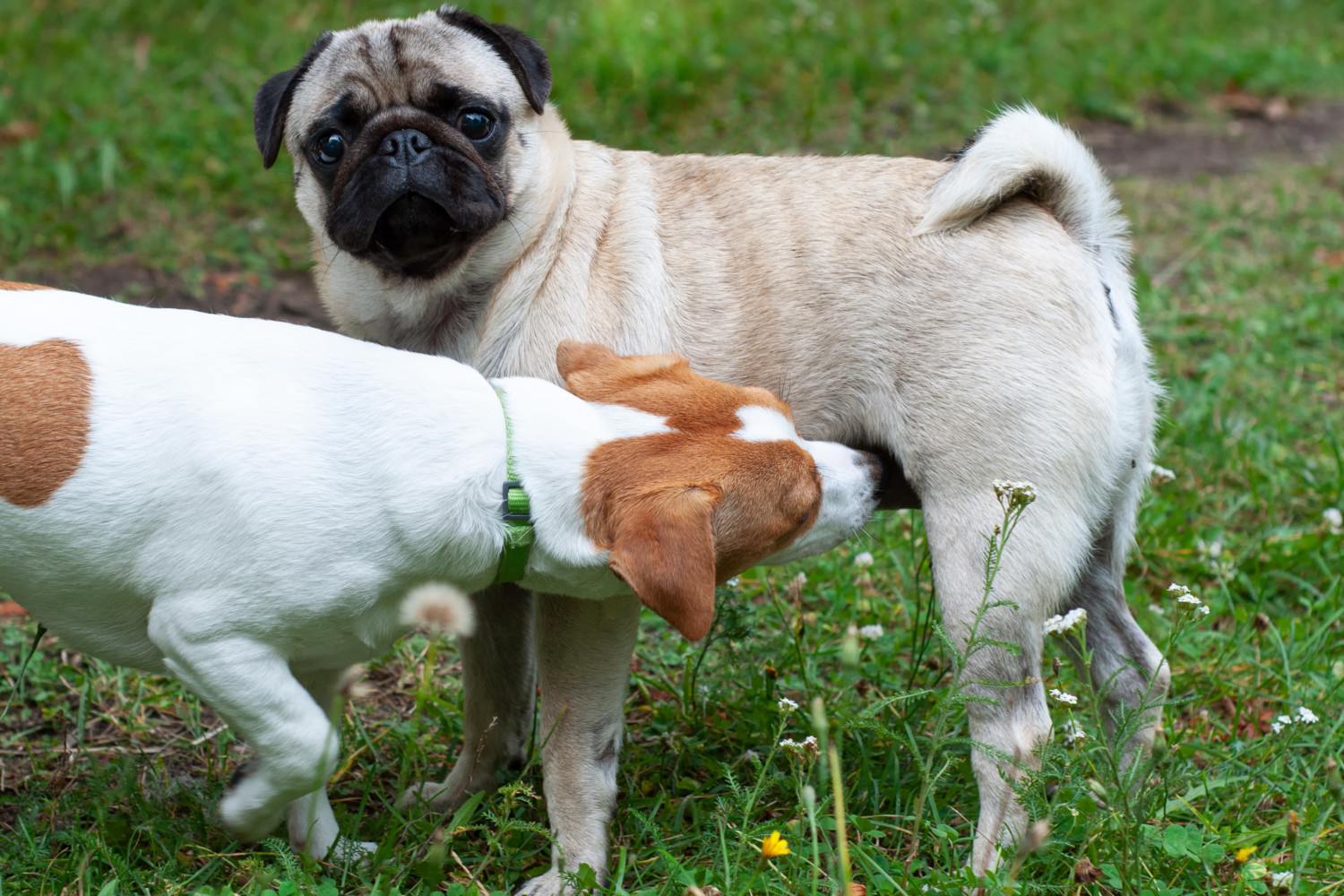
Another butt-related behavior dogs display is sniffing other dogs’ butts.
“Dogs have a very keen sense of smell and can learn almost everything about another dog just from a quick sniff of his butt,” Sunny explains. “This includes, sex, approximate age, health, and if they’ve met before. The act of sniffing each other’s rear ends also allows both dogs to assess the other’s body language and demeanor to see if this could be a new friend or someone they should keep their distance from.”
Basically, a butt sniff is the canine version of a handshake, so let them enjoy it.
Eating Poop (Coprophagia)
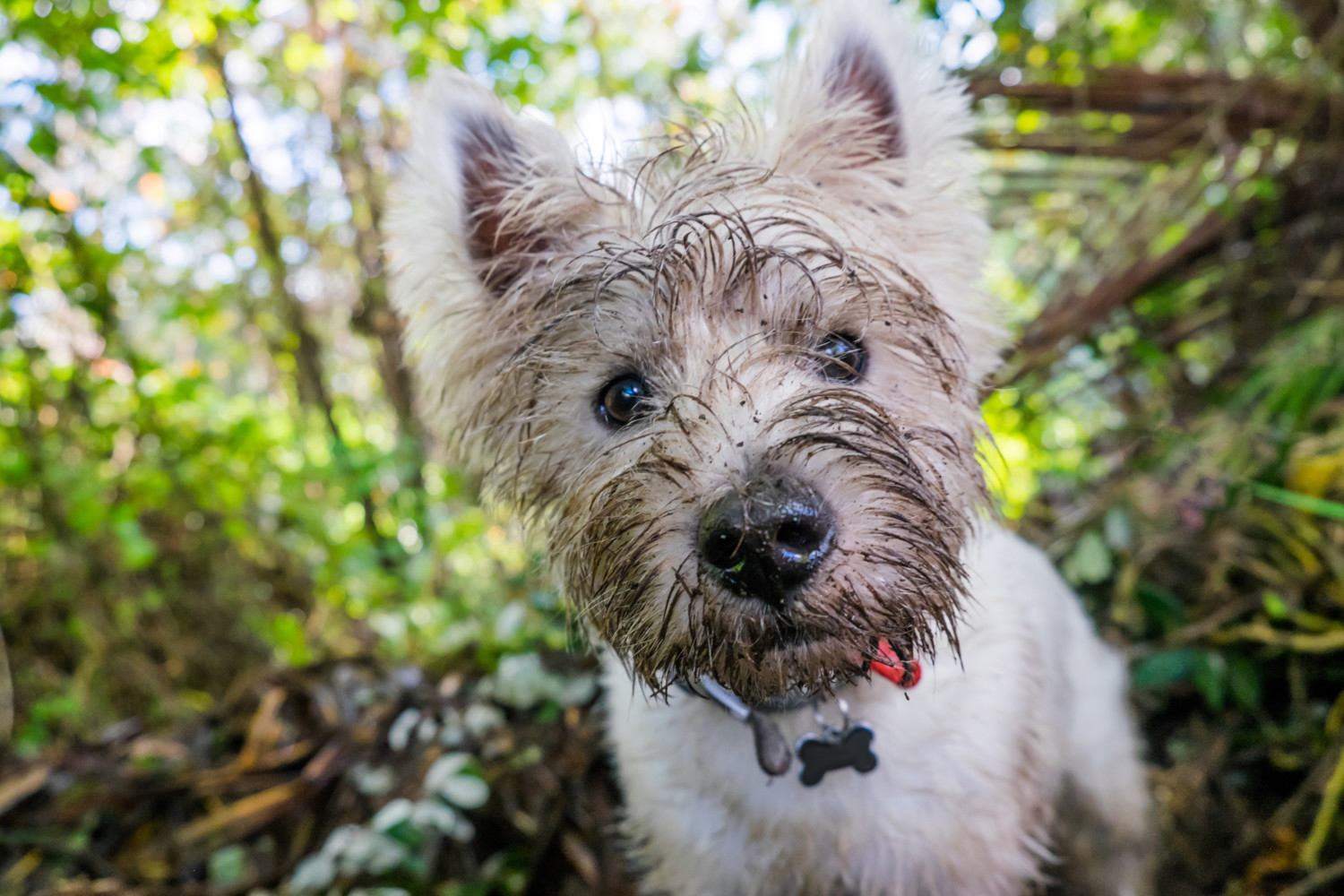
Eating poop (officially called coprophagia) is gross to us, but it is actually fairly common in dogs, Sunny says. According to a study published in Veterinary Medicine and Science, researchers found that 16% of dogs are “frequent” poop eaters (meaning they’ve been caught doing it at least six times), and concluded that the habit is simply in a dog’s DNA.
“Our conclusion is that eating of fresh stools is a reflection of an innate predisposition of ancestral canids living in nature that protects pack members from intestinal parasites present in feces that could occasionally be dropped in the den/rest area,” wrote Dr. Benjamin Hart from the University of California, Davis.
However, coprophagia could indicate a medical issue in some cases, so it’s always best to check with your veterinarian in the first instance before trying any behavioral fixes.
Staring Intently
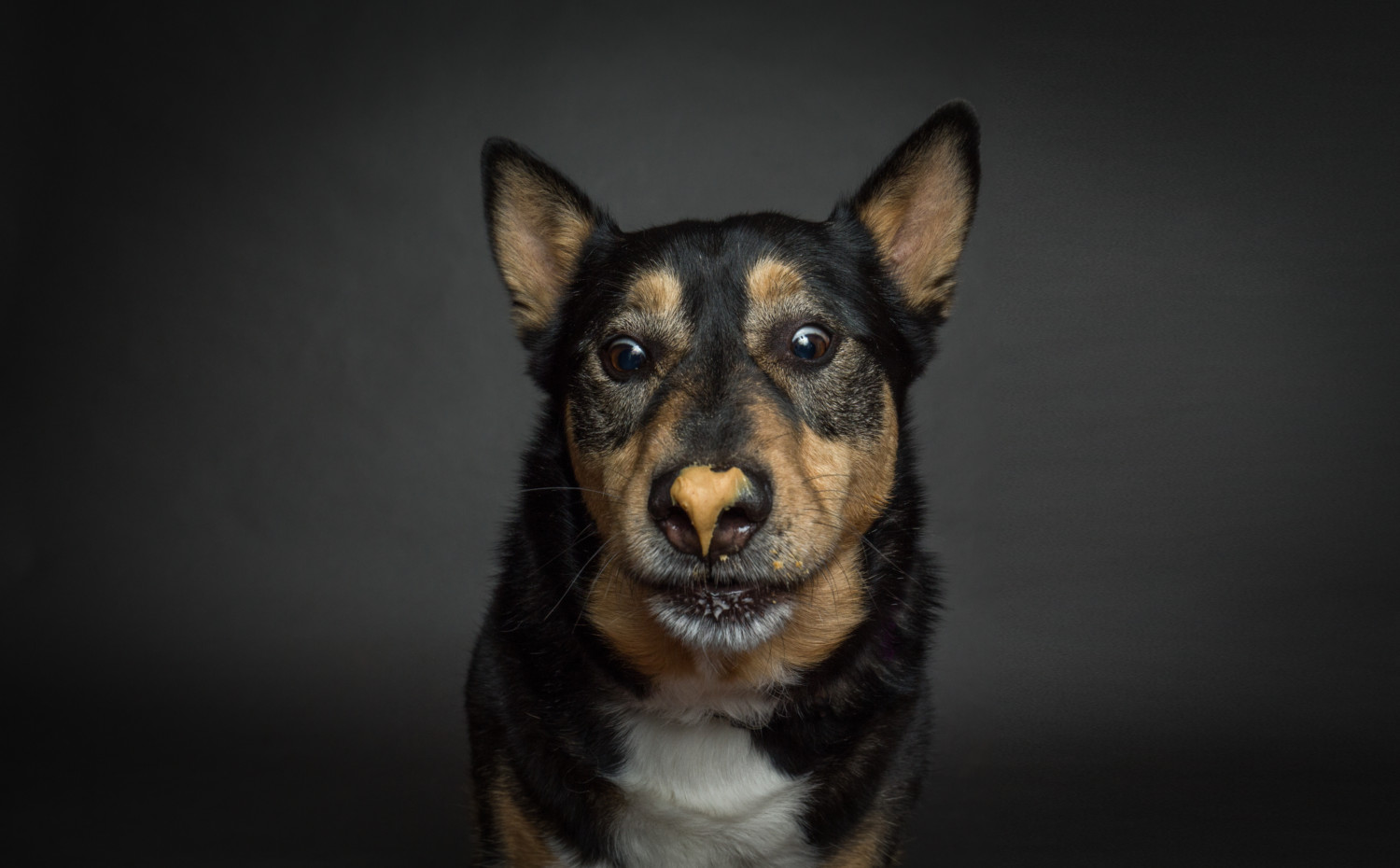
Lots of dogs stare at their owners and at other animals, and the meaning depends on the context, says Trott.
“Dogs can stare if they are highly motivated, for example if their owner is holding a ball or treat that the dog wants,” she says. “In this case the dog is happy and excited.”
But staring can also be a precursor of an escalation between two dogs.
“If two dogs that are not friendly are staring at each other and appear ‘frozen,’ you absolutely need to separate them ASAP,” Trott warns.
Staring is often seen in play as well, when two dogs slowly approach each other and then start a sudden game of chase.
Squinting Or Blinking
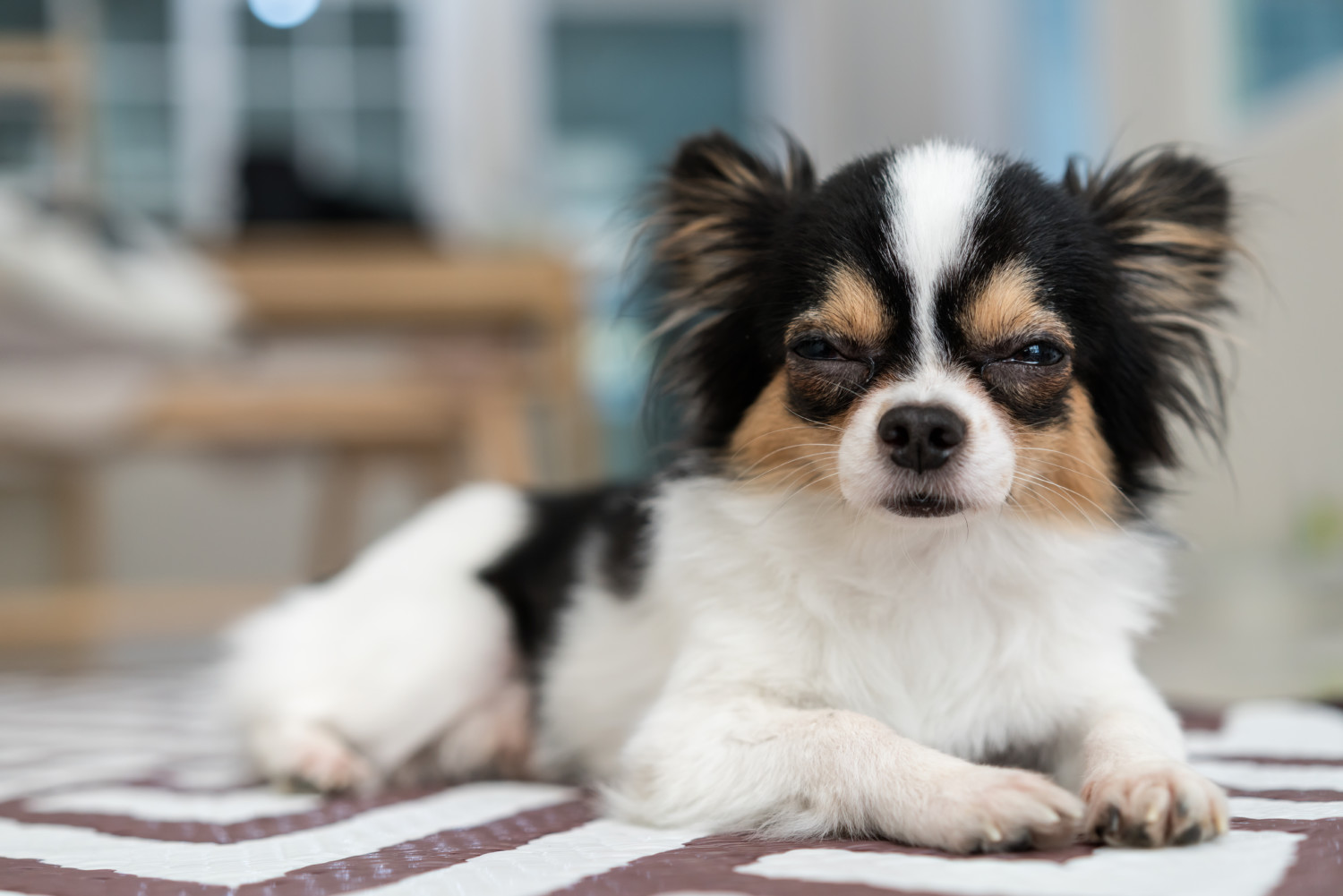
Squinting or blinking is a calming signal that dogs do when they are stressed or uncomfortable, or if they want to appear non-threatening, Trott explains.
“A dog might blink at the vet, when another dog is barking at him, or when the owner is scolding him,” she says. “Dogs that are well-socialized will also blink in the presence of scared dogs or young puppies to communicate that there is nothing to worry about.”
Puppy-Dog Eyes
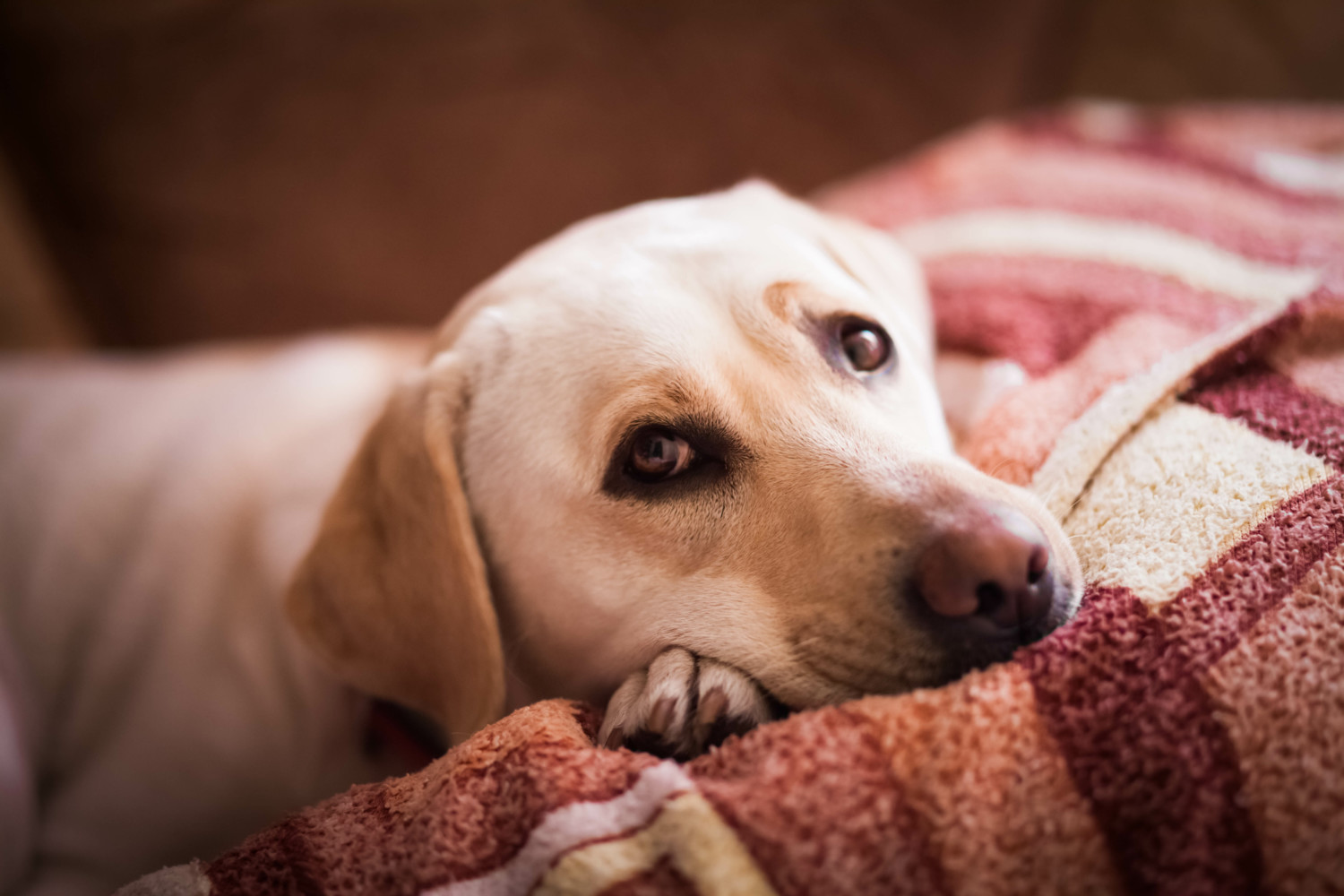
Those puppy-dog eyes don’t disappear when your dog becomes an adult. Normally, they simply mean your dog is engaged with you in the widest sense and hopeful for some kind of interaction, Trott explains. For instance, your dog may look at you with puppy-dog eyes when you are cutting up steak for dinner. In this case it’s obvious what the pup is hoping for!
“A dog who is only allowed on furniture after being invited up there may look at you with puppy-dog eyes to be allowed on the couch,” Trott adds. “Other dogs do this if they want to go for a walk.”
Licking You
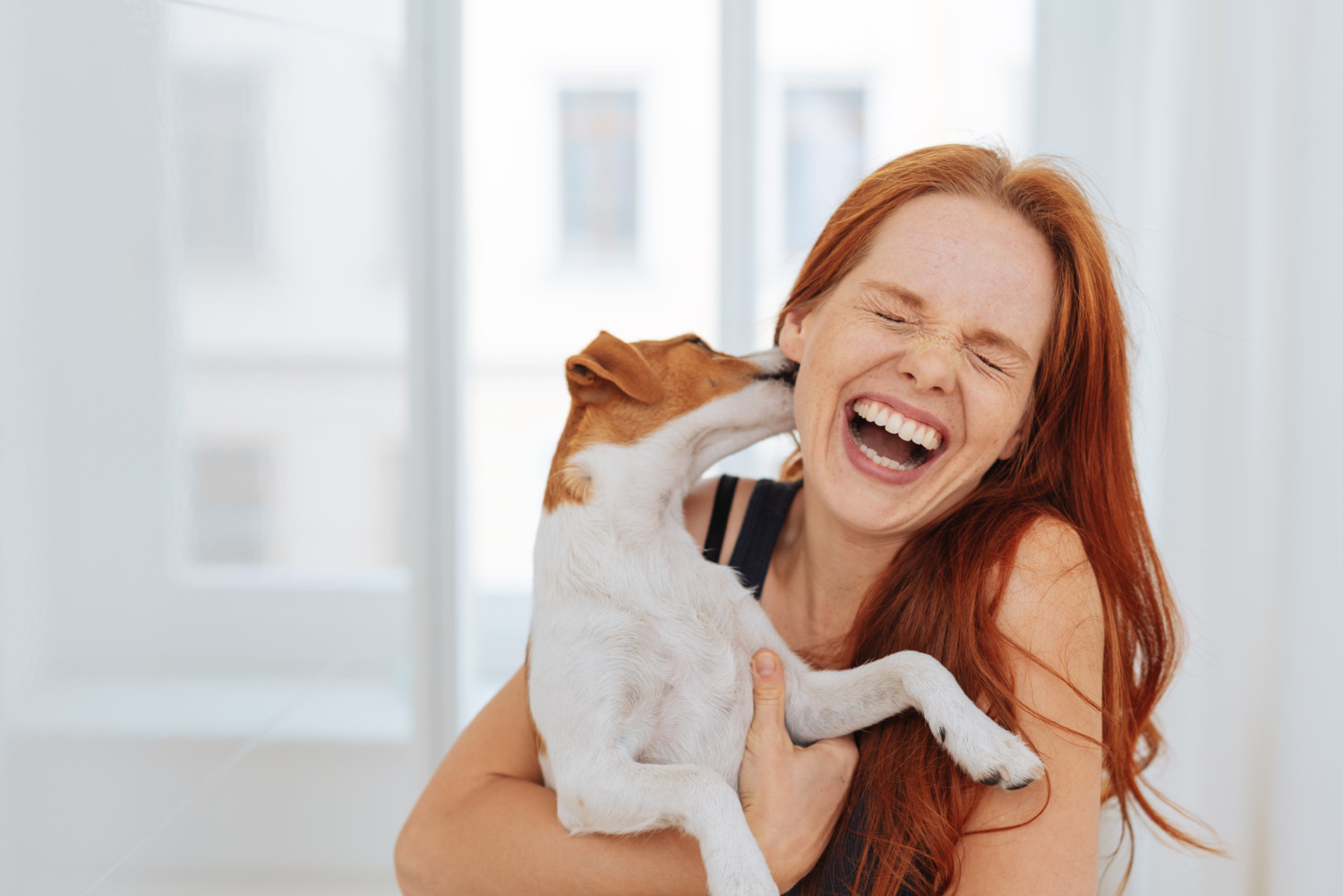
Licking can happen for lots of reasons, and they aren’t all a “kiss,” says Karen Reese, certified animal trainer and animal behavior manager at Operation Kindness.
Sometimes, dogs will lick you as if they are grooming you, similar to what a mother dog does to clean her babies.
“This is a soothing gesture and can relax the dog,” Reese explains.
On other occasions, a dog may “kiss to dismiss,” meaning it licks in an attempt to get you to move away.
“This can be commonly seen when a person is too close to a dog’s face,” Reese says. “You will need to observe the rest of the dog’s body language to determine if the dog is relaxed or tense.”
Kicking Up Grass Or Dirt
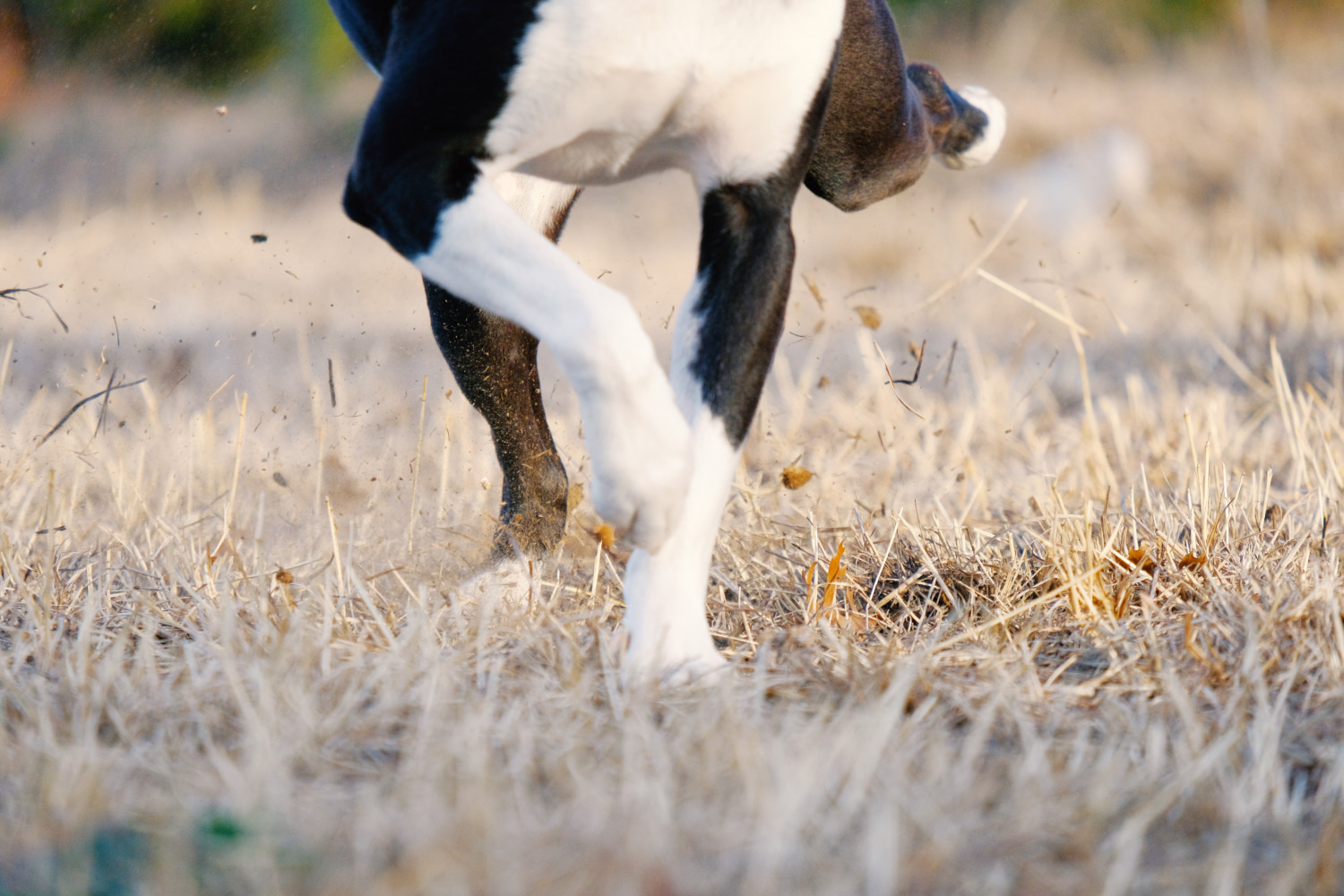
On the base of a dog’s feet, there are sweat glands known as apocrine sweat glands that secrete pheromones. These are species-specific chemical factors that dogs use to communicate, explains veterinary technologist and canine behavior specialist Nicholas DeRoma.
“When a dog kicks after urinating or defecating, it is spreading its scent onto the ground, displaying a distinct marking behavior,” DeRoma says.
Baring Teeth
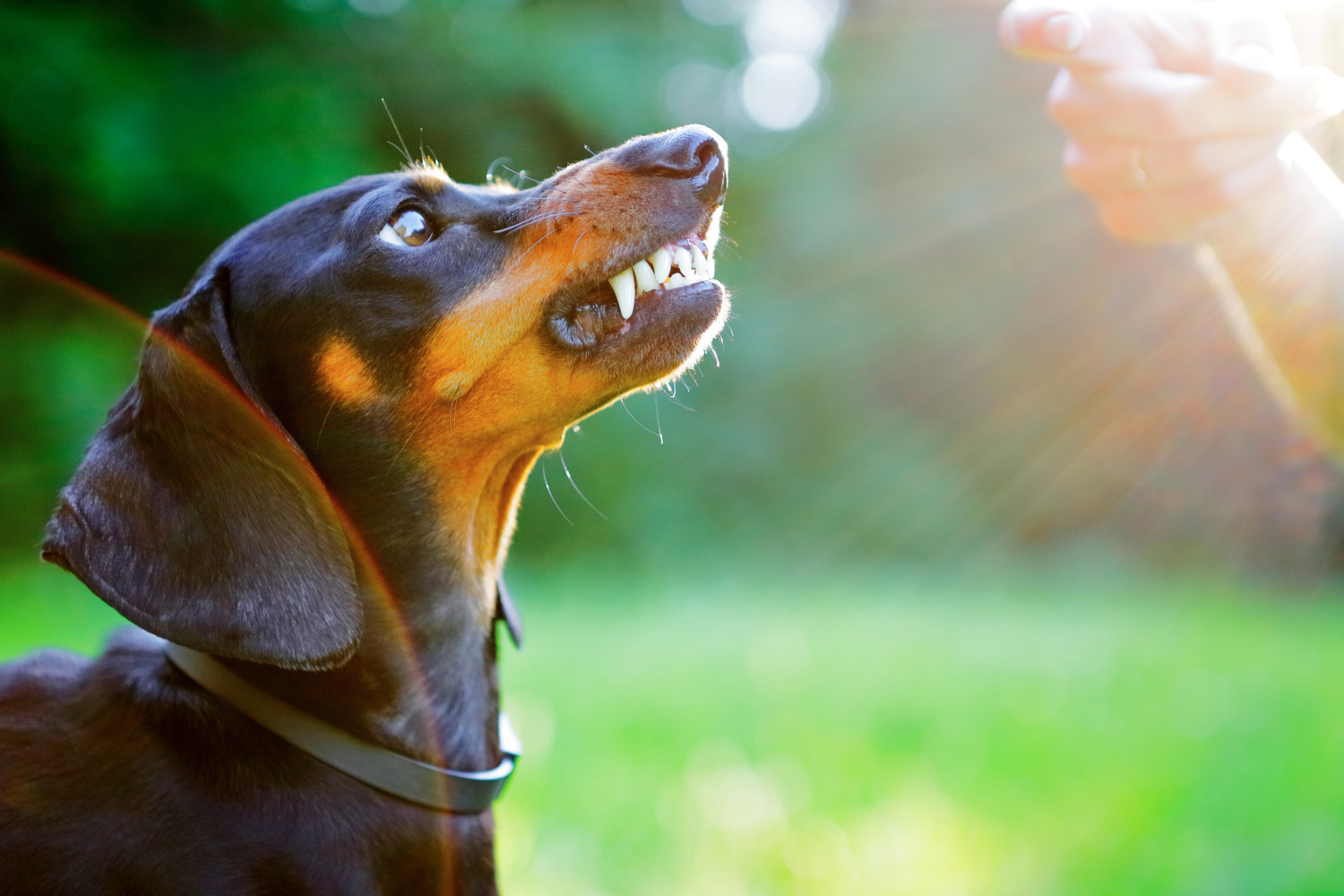
Baring teeth is generally a warning sign that the dog wants a threat to stop, says Reese.
“Dogs may bare their teeth in an agonistic pucker; this is when the corners of their lips are drawn forward creating a ‘short lip’ and baring their front teeth,” she explains. Basically, it means back off.
Chewing
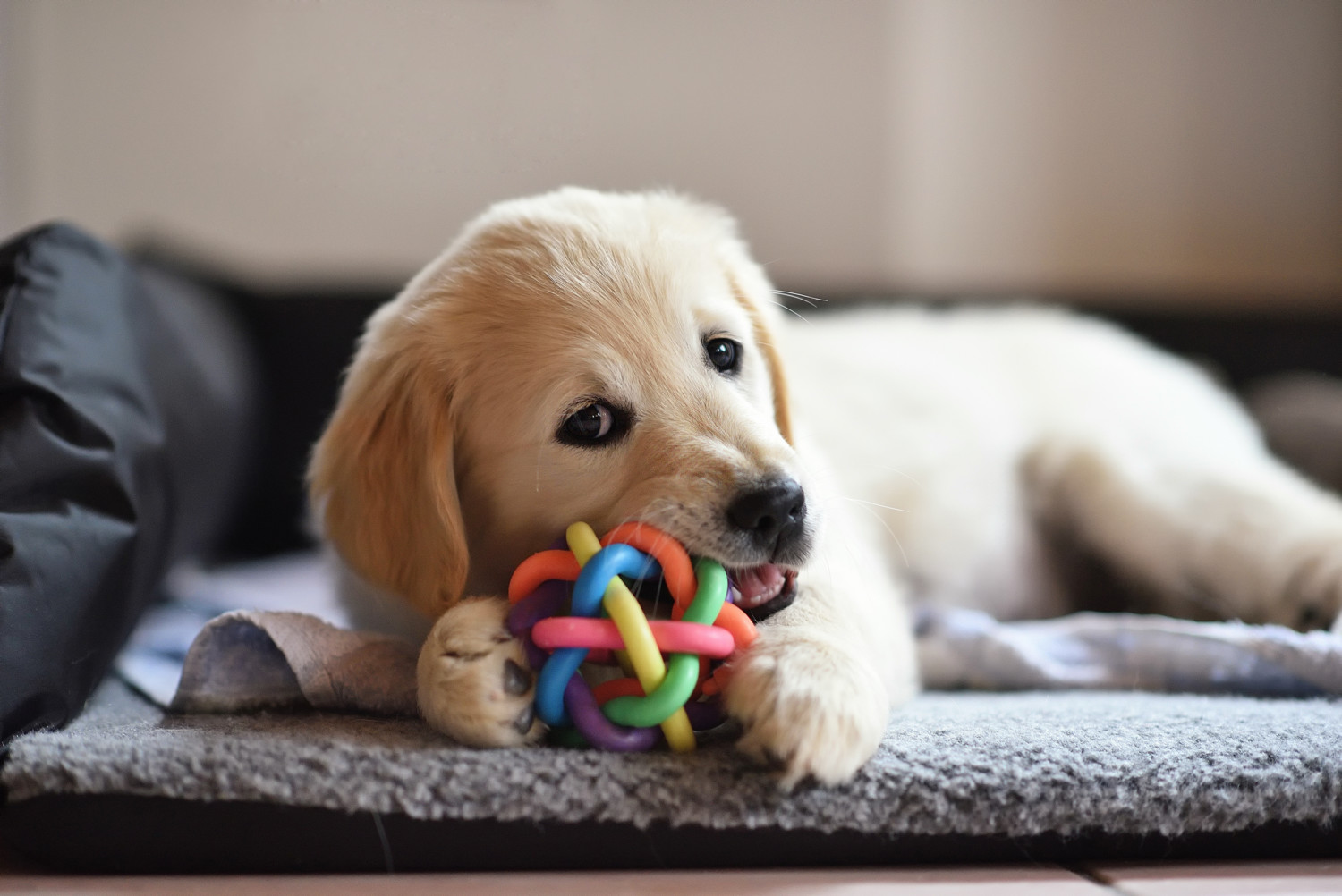
When you’re a puppy, chewing is a big part of exploring the world. It may also be a way to relieve pain caused by incoming teeth. And when older dogs chew, it’s keeping their jaws strong and their teeth clean. Chewing may also be used to ward off boredom and keep mild anxiety or frustration at bay, says the American Society for the Prevention of Cruelty to Animals (ASPCA).
If your dog is chewing something it shouldn’t be, like furniture, it may be lacking physical and mental stimulation. The ASPCA suggests providing a variety of ways for your dog to exercise its mind and body, such as daily walks and outings, off-leash play with other dogs, fetch games and meals that are fed in food puzzle toys.
Chasing Tail
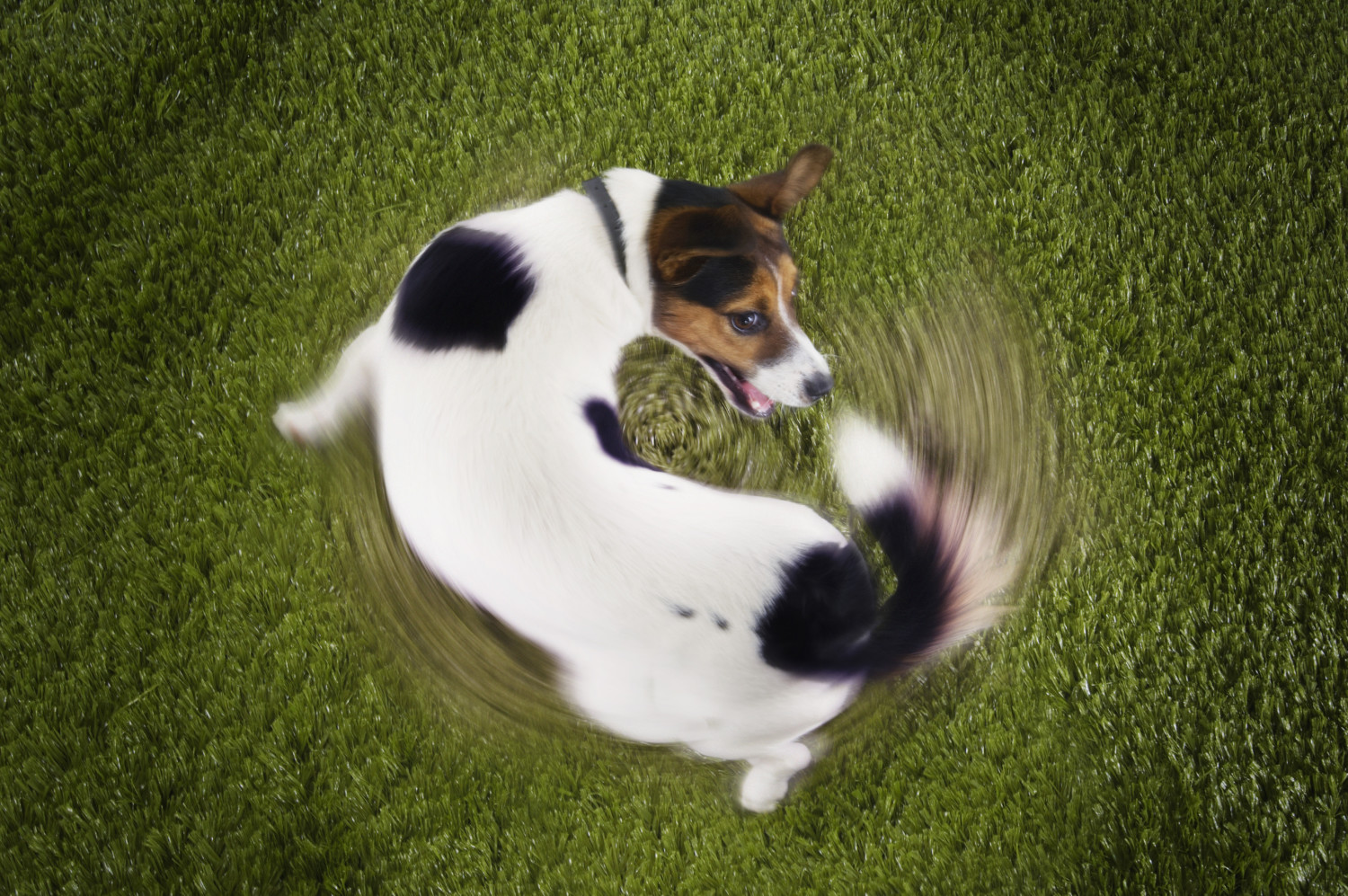
What’s cuter than a dog chasing its tail? This is usually your dog’s way of playing, says Sara Ochoa, DVM, veterinary consultant for DogLab.
“They may get bored and want to run after something and their tail is something that they can [go] after — and often never catch,” Ochoa says.
Head Tilt
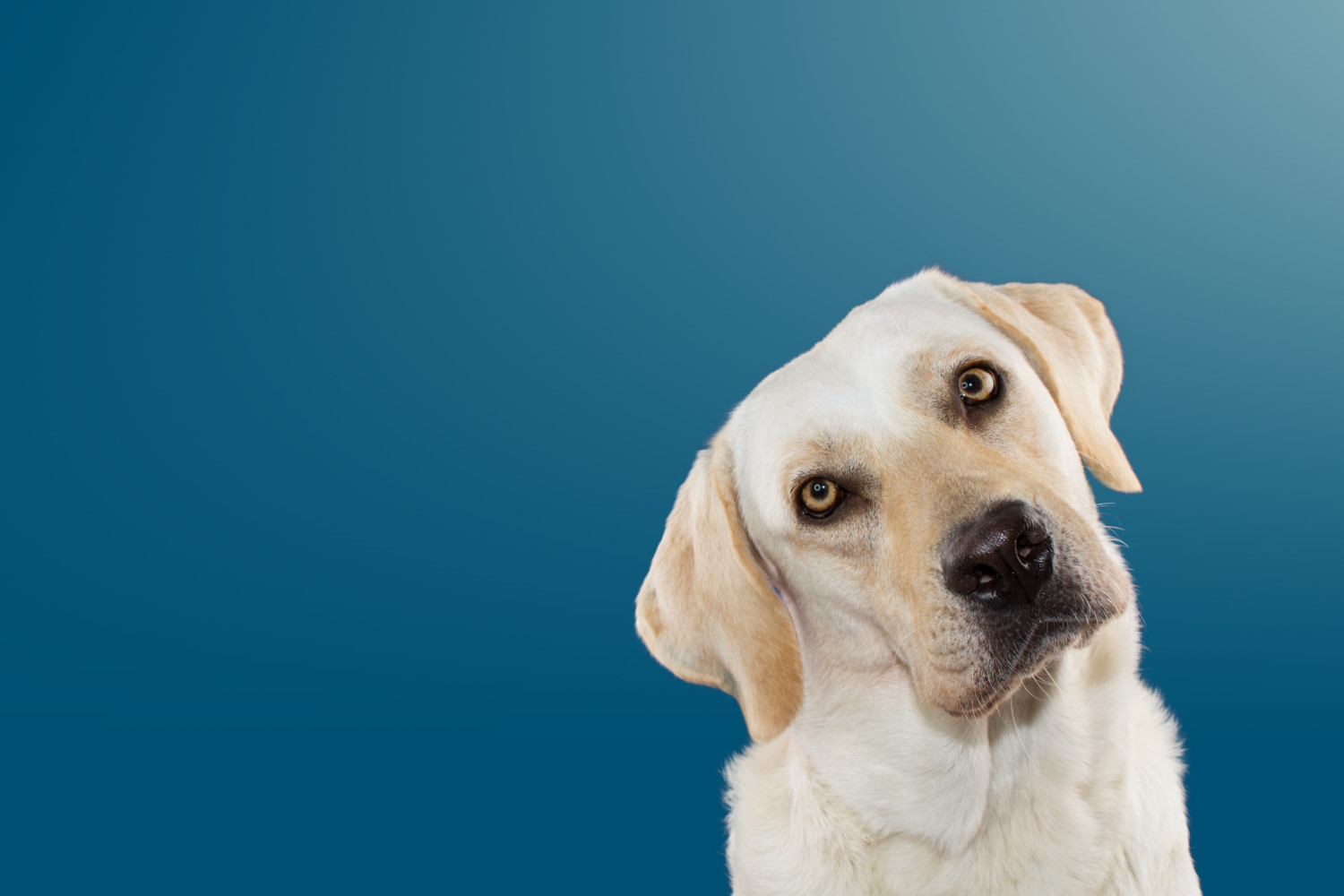
Another cute canine habit is the head tilt. This shows that your dog is engaged in what you’re saying – similar to how humans nod during a conversation to show they’re listening, explains VCA. And while all breeds may do it, social dogs who particularly enjoy human interaction are more frequent head tilters.
Sometimes, there may be an underlying medical issue that causes the tilt, like an inner ear infection, so it’s important to get it checked by a veterinarian if it’s causing concern, Ochoa says. If you notice a consistent head tilt that’s not associated with communication, it’s time to make that appointment. According to VCA, middle ear infections are more serious and are often accompanied by a more persistent head tilt, while holding the head to the side may also indicate a neurological problem such as vestibular disease.
Lying In Your Bed When You’re Not There
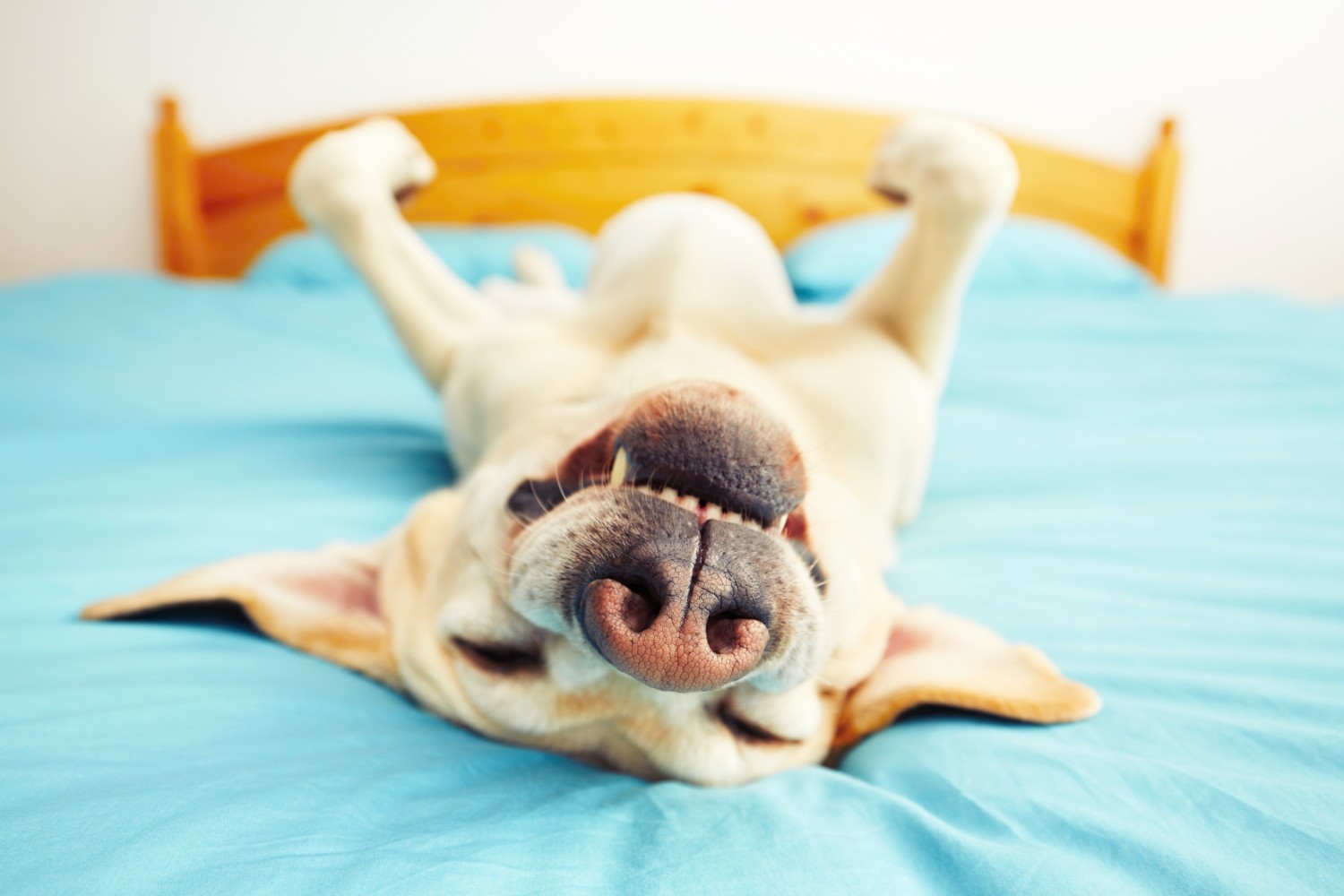
Whatever you think about your dog being on your bed, you can bet it will want to be there any chance it can get. And if it does it when you’re not there, this is down to its inherent pack mentality.
“The adults in the house are the leaders of the pack,” Ochoa explains. “If you get to sleep where the leaders sleep, you’re high in the ranking order. Most dogs love to sleep in their owner’s beds so that they are also high in the ranking order.”
Couch Trashing
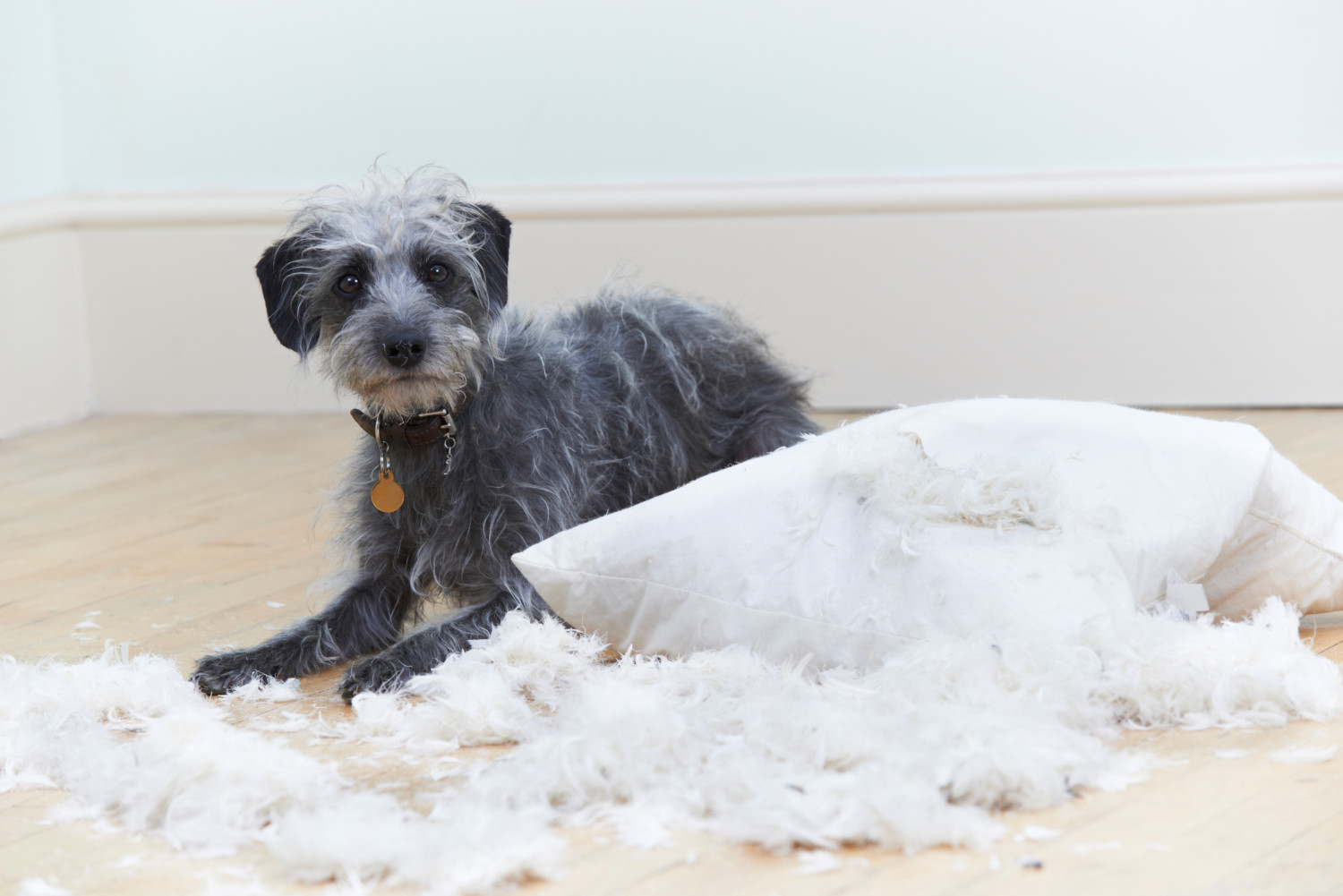
Dogs are incredibly smart creatures, and if they’re left alone for long periods without adequate mental and physical exercise, they will often create their own “jobs,” says Sunny.
Unfortunately, this may include chewing up the couch (or pillow, or anything they can easily attack), digging through the trash or digging a hole in the yard. To avoid this, Sunny recommends giving your dog plenty of exercise, mental stimulation and training, so they’re aware of what are appropriate outlets (like playing with their own toys) and what is not (eating the couch and destroying the pillows).
Leaning On You
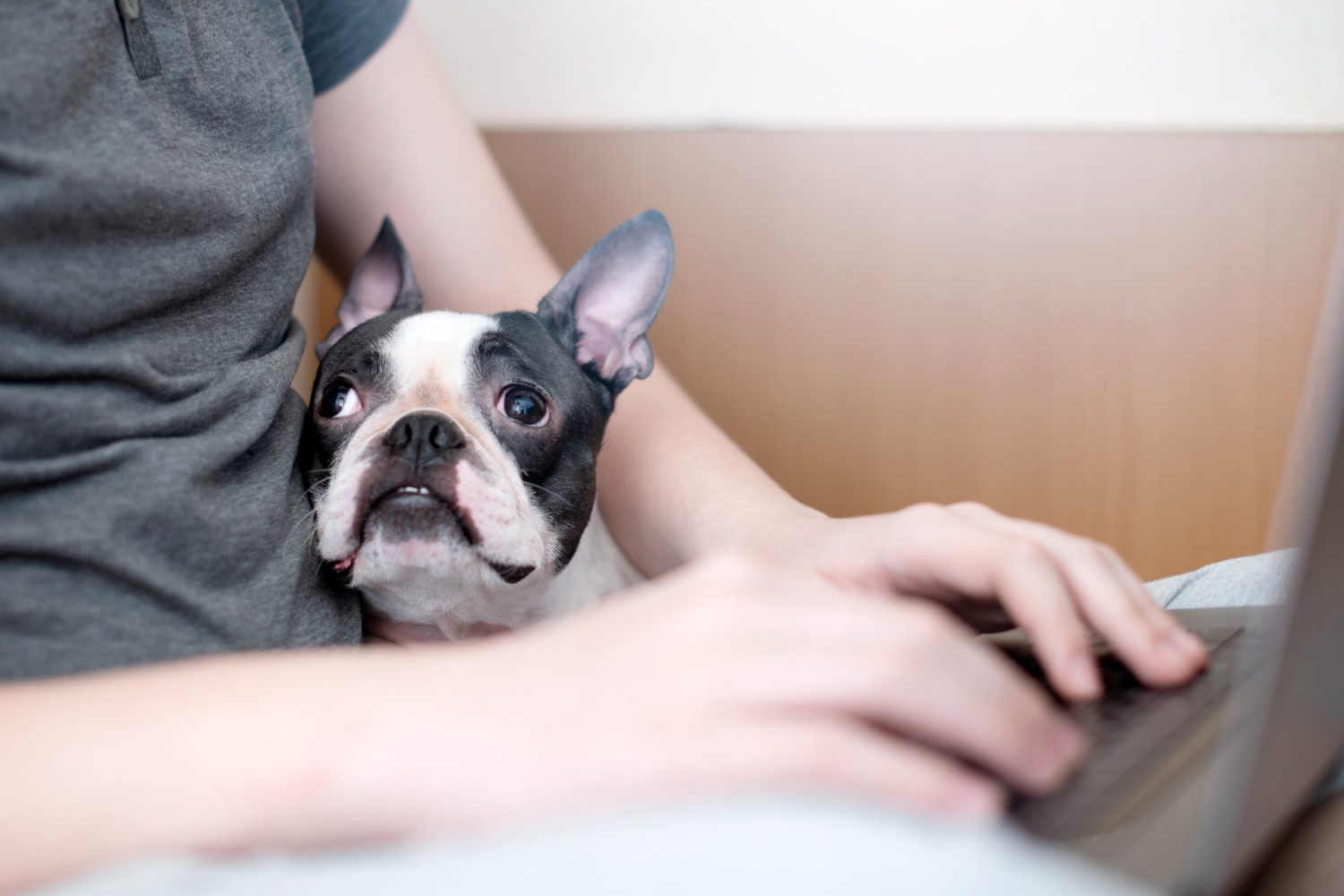
For most dogs, leaning is loving.
“My dog will run between my legs and lean on me when she is very excited to see me,” Ochoa reveals. But in some cases, there could be vestibular issues, meaning your dog is leaning on your to keep its balance. If the leaning is something your pooch does all the time and is concerning to you, speak to your veterinarian.
Going Crazy When You Get Home
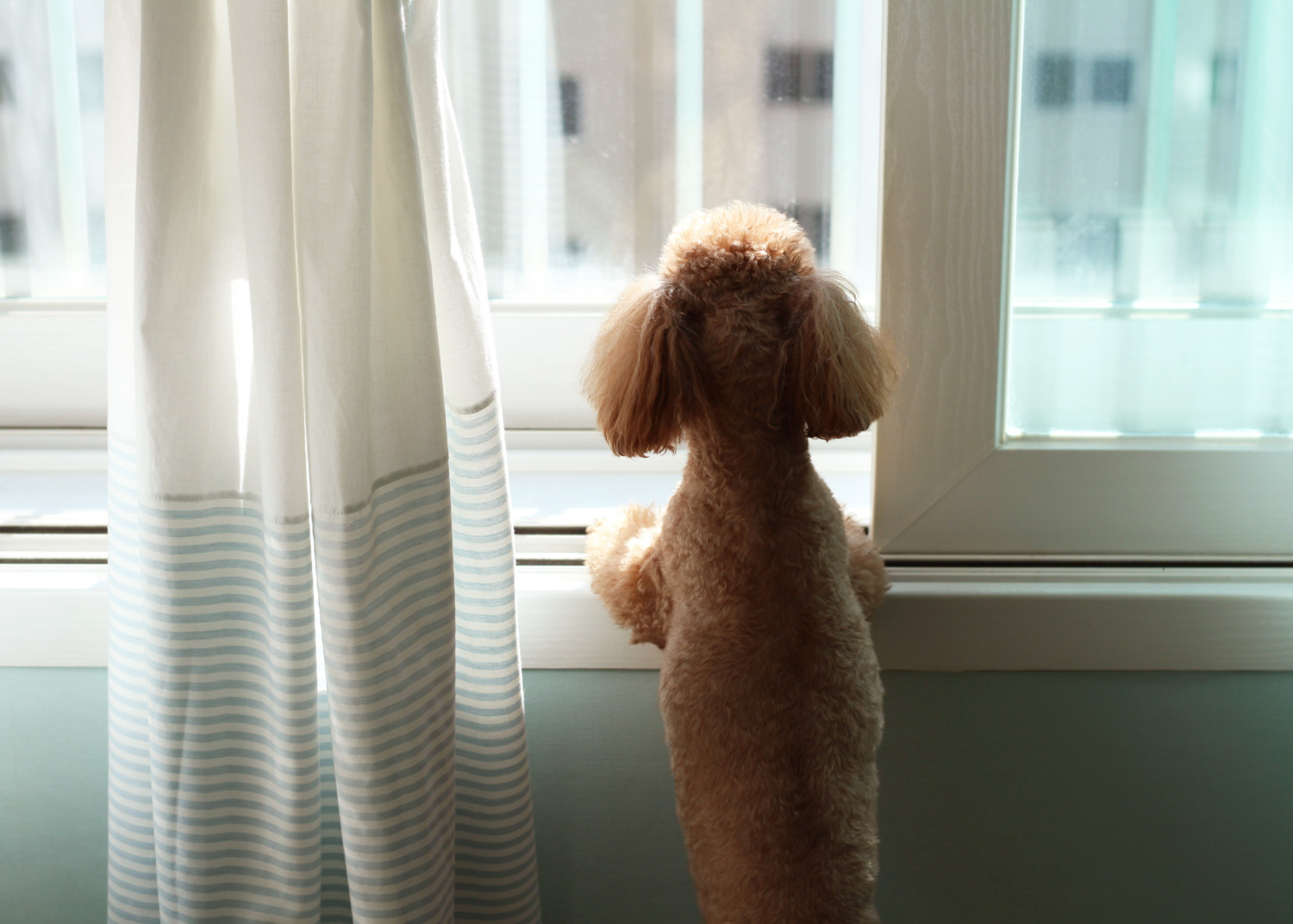
Nothing compares to the welcome you get from your dog when you get home — and in most cases, it doesn’t matter if you’ve been away for 10 minutes or several hours. It’s all to do with the “happy hormone” oxytocin (yes, the same one humans have), which is released when you’re reunited. Remember, dogs are emotional creatures, just like humans, and they show their love towards their human family just like we do – although admittedly, we don’t tend to lick each others’ faces after a day apart.
But your dog’s excitement may not be just because it loves you, says Ochoa. It may associate your return with going for a walk, being fed or getting a treat.
Bringing ‘Gifts’
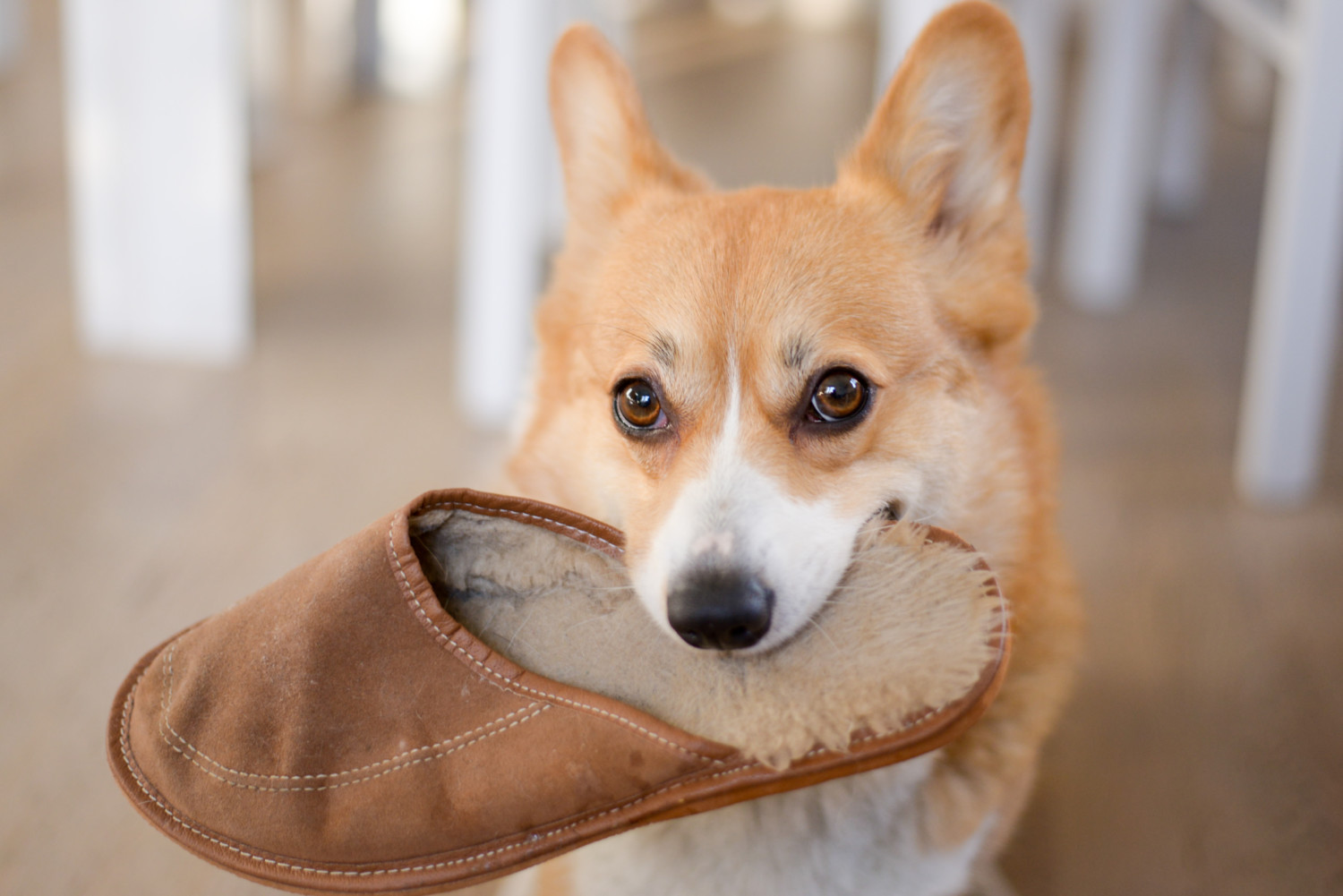
Dogs have a different definition of “gift” than we do. They’ll bring you all sorts of dirty, smelly things from the yard and random objects found throughout the house, and be very proud of their generosity.
“Many dogs that enjoy playing with toys with their people will bring a ‘gift’ to someone when they want to play or when they are exhibiting friendly behavior,” Reese explains. “Most often, these dogs are expecting a friendly greeting with the person or maybe a game of tug or fetch.”
Open Mouth With Relaxed Tail
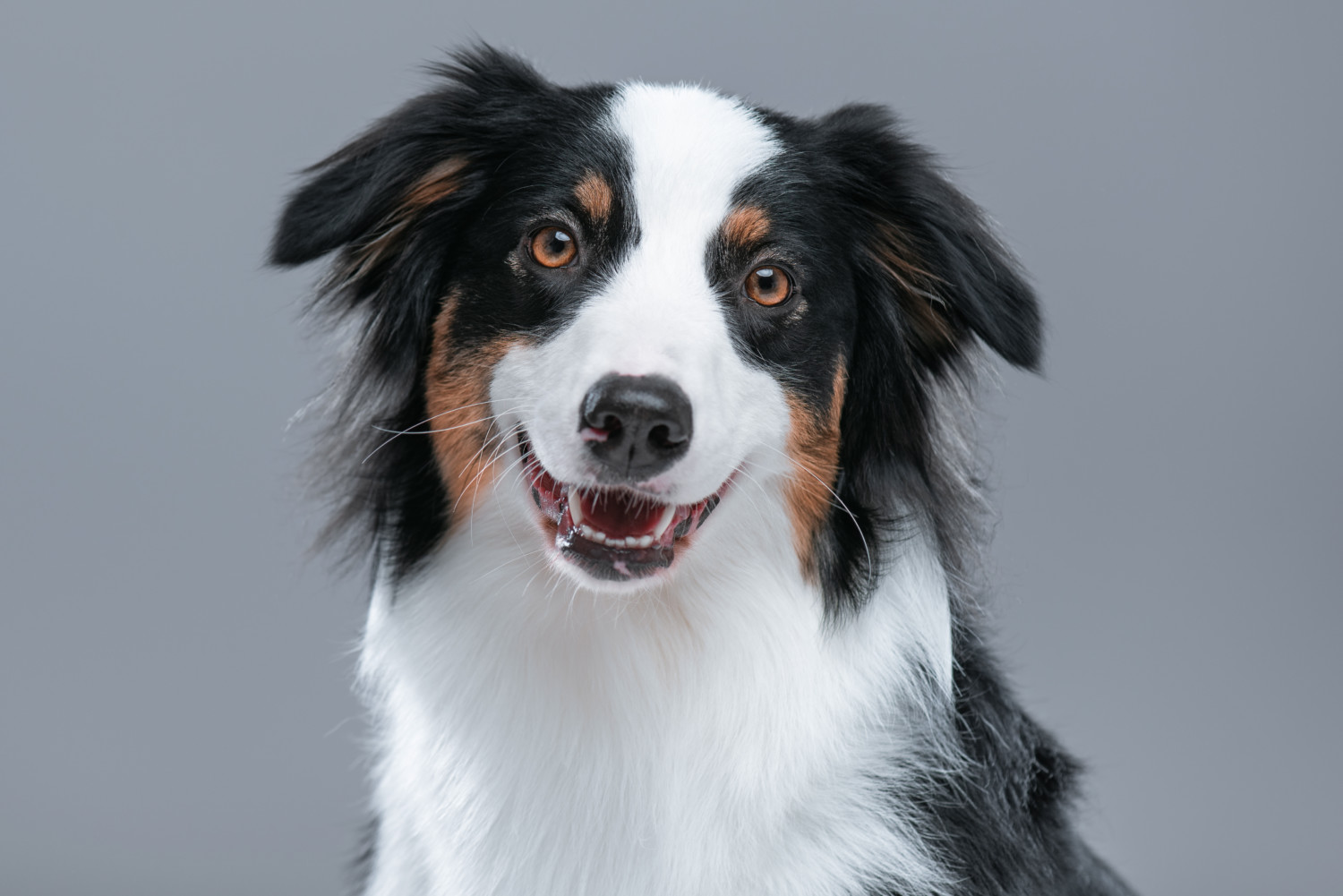
An open mouth and relaxed tail is usually a sign of a content dog, says Trott. And if the ears are high, it shows focus and attention; meanwhile, the relaxed tail communicates happiness.
If it looks like your dog is baring its teeth at the same time — a little like a grin — this isn’t the same as aggressive teeth-baring, says Reese.
“You can tell the difference by looking at the dog’s overall body language but also the corners of the lips will be pulled way back, creating a ‘long lip,'” she explains. But not all dogs will submissively grin, and if yours doesn’t, it’s nothing to worry about.
Cuddling
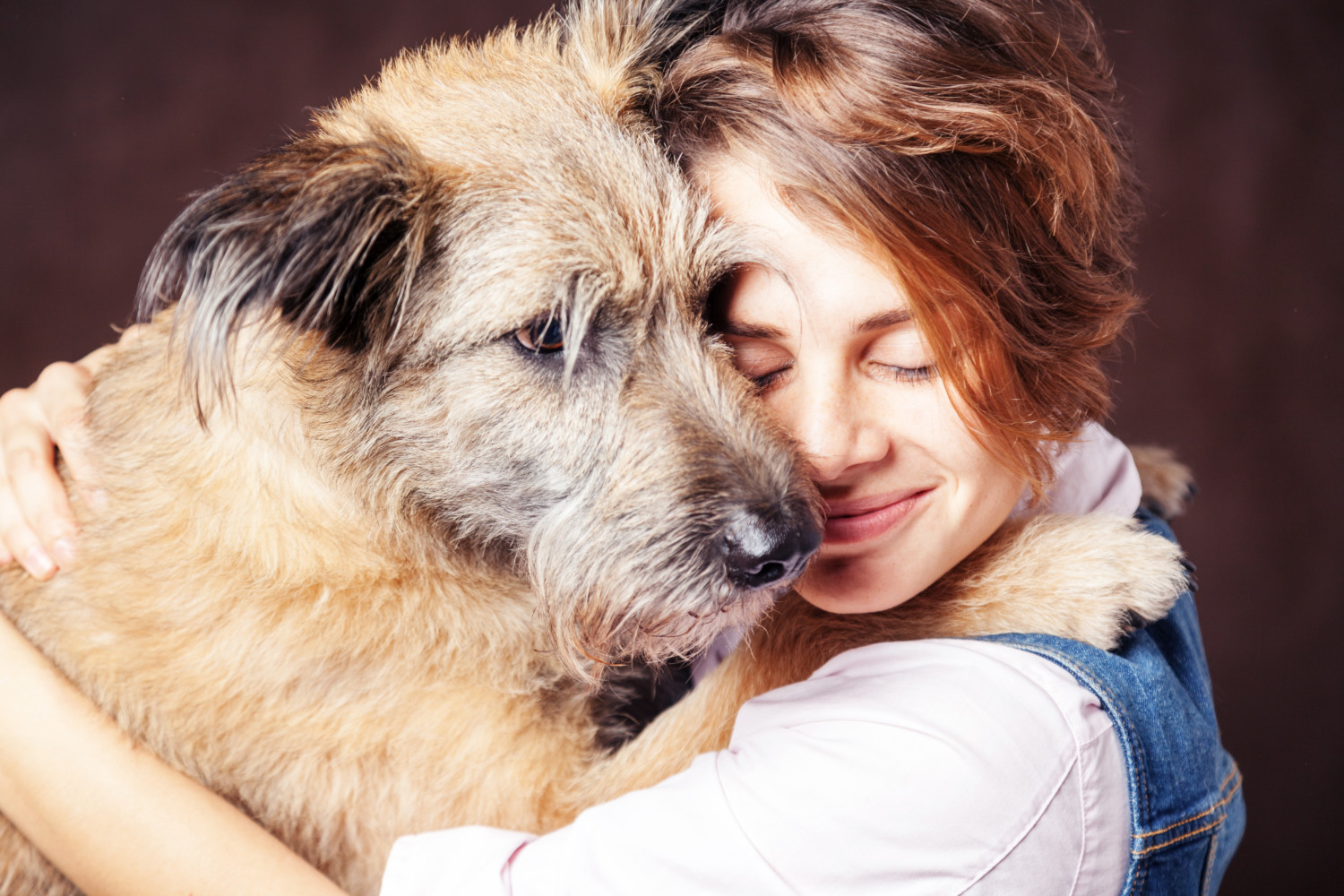
Dogs need affection, company and love to thrive. And sometimes, that extends to actual cuddling. The action releases chemicals that makes it feel good — and it’s bound to make you feel pretty special, too.
Sponsored Content





